User expectations have never been higher. In 2026, digital experiences are judged not only on how they look, but on how efficiently they guide users, anticipate needs, and remove friction across every interaction. As technology ecosystems grow more complex and competition intensifies, UX is no longer a downstream design activity. It is a core business capability.
This shift is redefining the role of the modern UX design agency. Agencies are expected to bring strategic insight, data fluency, and deep understanding of user behavior—not just polished interfaces. The most effective UX partners are helping organizations design experiences that scale, adapt, and deliver measurable impact.
Below are the top five UX design trends agencies are actively implementing in 2026 to help brands stay ahead of the curve.
1. AI-Augmented Personalization at Scale
UX design agencies are increasingly leveraging artificial intelligence to move beyond static user journeys. In 2026, personalization is dynamic, contextual, and continuously evolving based on real user behavior.
Rather than designing a single experience for broad audiences, agencies are building UX frameworks for their clients that adapt content, navigation, and interactions in real time. Predictive UX models help anticipate user intent, while machine learning enables experiences to refine themselves over time.
Importantly, leading agencies are pairing AI-driven personalization with transparency and control. Clear user feedback loops, ethical data usage, and explainable design choices are critical to maintaining trust while delivering relevance at scale.
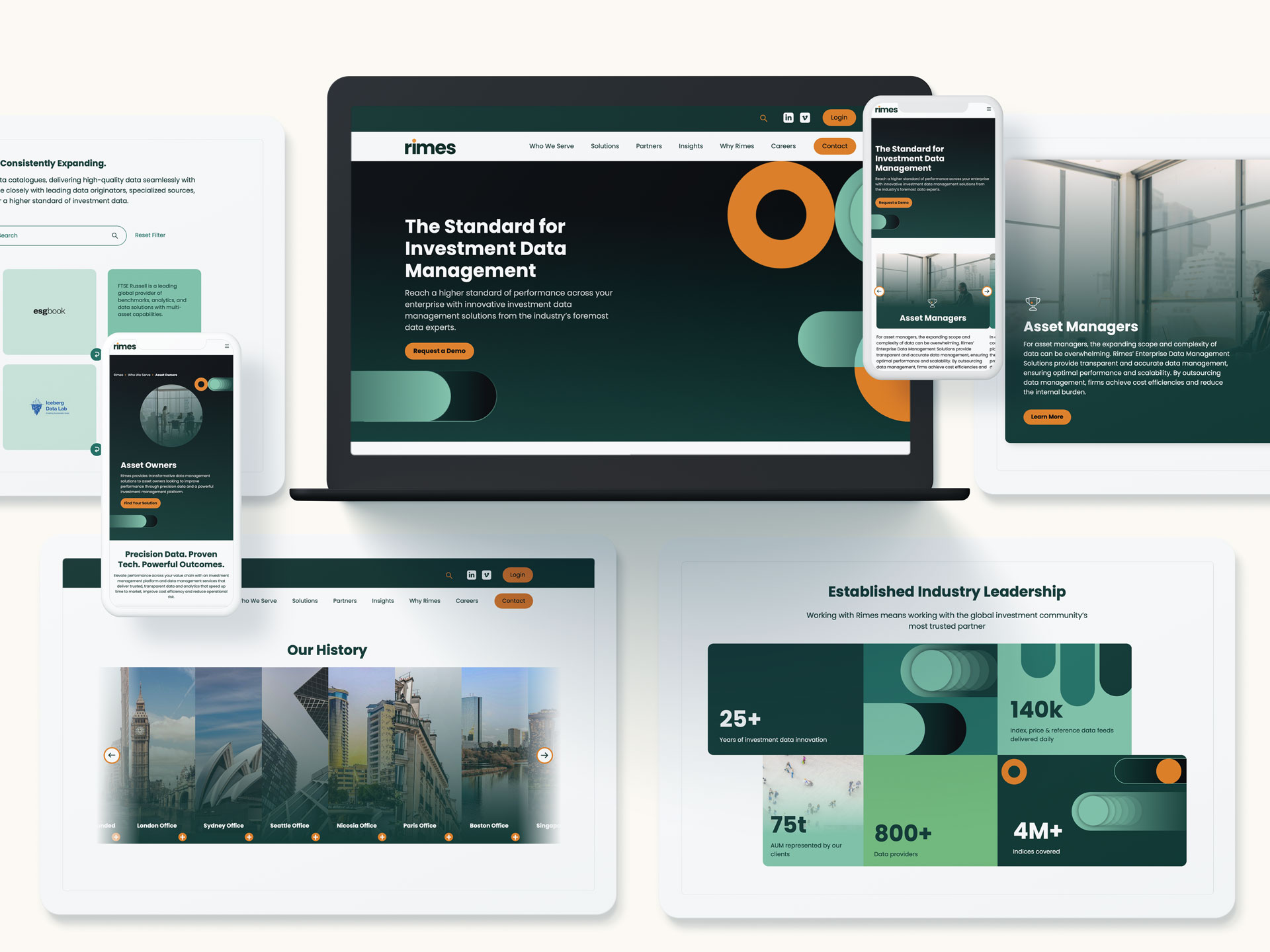
2. UX for Complex Enterprise and B2B Platforms
As enterprise platforms continue to expand in scope and functionality, UX design agencies are focused on simplifying complexity without diluting capability. In 2026, some of the most impactful UX work is happening in B2B, government, and highly regulated environments.
Agencies are designing experiences that support real workflows through role-based interfaces, progressive disclosure, and decision-support patterns. Instead of overwhelming users with every feature at once, UX is structured around context and intent.
This approach requires deep user research and close collaboration with stakeholders. A strong UX design agency understands that usability in enterprise environments is inseparable from operational realities and business objectives.
3. Accessibility-First and Compliance-Driven Design
Accessibility has moved from a best practice to a baseline expectation. In 2026, UX design agencies are embedding accessibility into the foundation of digital experiences rather than treating it as a retroactive requirement.
Designing with accessibility in mind improves usability for all users, not just those with disabilities. Clear navigation, readable typography, logical interaction patterns, and adaptable layouts benefit every audience.
Agencies are also helping organizations navigate evolving compliance standards by integrating accessibility into design systems, component libraries, and governance processes. The result is UX that is inclusive, resilient, and future-ready.
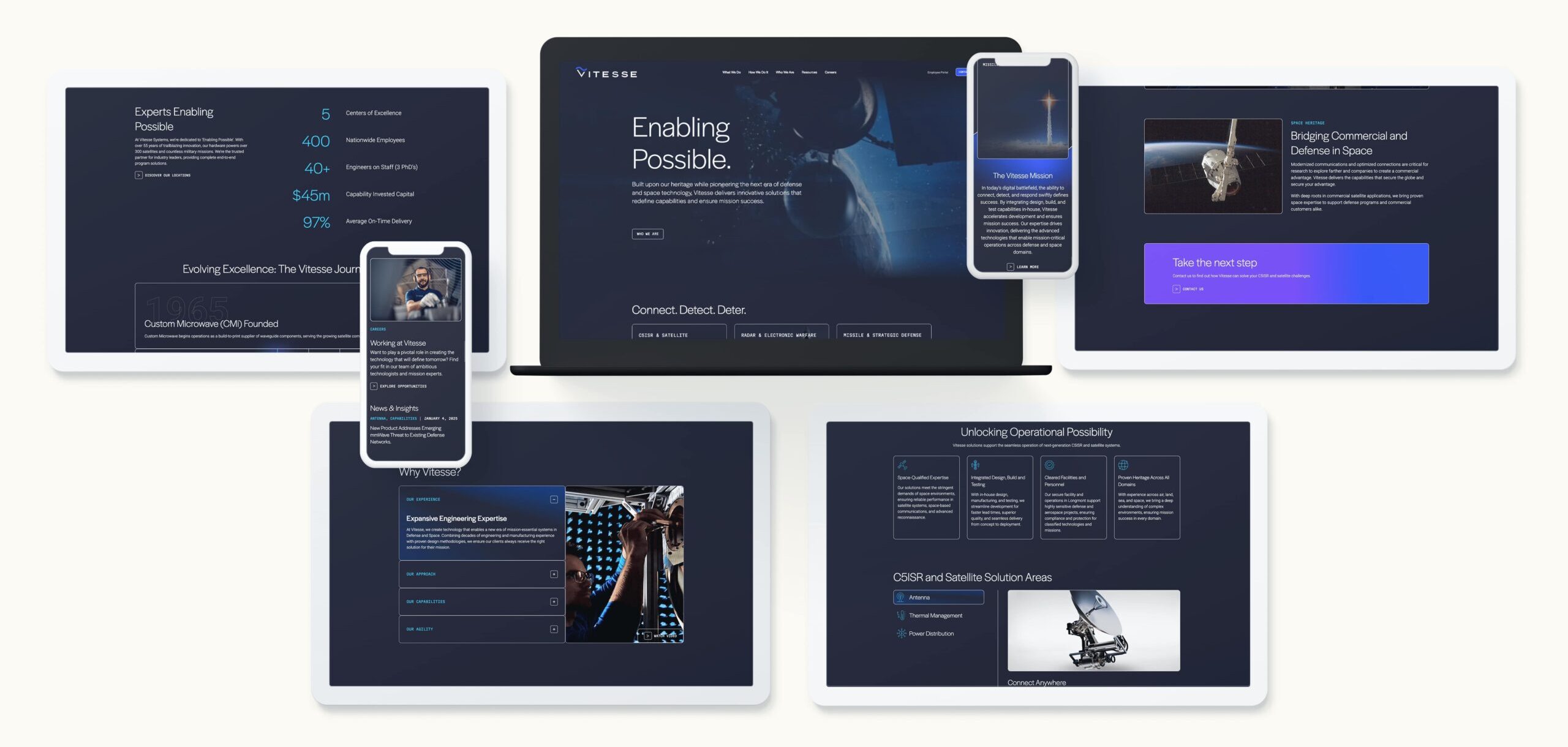
4. UX Integrated Across the Full Digital Ecosystem
UX in 2026 extends far beyond the website. Users interact with brands across portals, applications, dashboards, marketing platforms, and internal tools—and they expect consistency across all of them.
UX design agencies are responding by designing cohesive experience ecosystems. This includes shared interaction patterns, unified design systems, and consistent language across touchpoints.
By aligning UX across marketing, product, and service environments, agencies help organizations reduce friction, strengthen brand trust, and scale experiences more efficiently. UX success is no longer about isolated wins; it is about system-wide cohesion.
5. Data-Informed UX Design and Continuous Optimization
The most effective UX design agencies in 2026 treat UX as a living system. Design decisions are guided by both qualitative insight and quantitative data, enabling teams to validate assumptions and iterate continuously.
User testing, behavioral analytics, and performance metrics inform ongoing refinement. Rather than launching and moving on, agencies help organizations optimize experiences over time as user needs evolve.
This data-informed approach ensures UX remains aligned with business goals while delivering consistent value to users. Optimization is not a phase—it is a mindset.
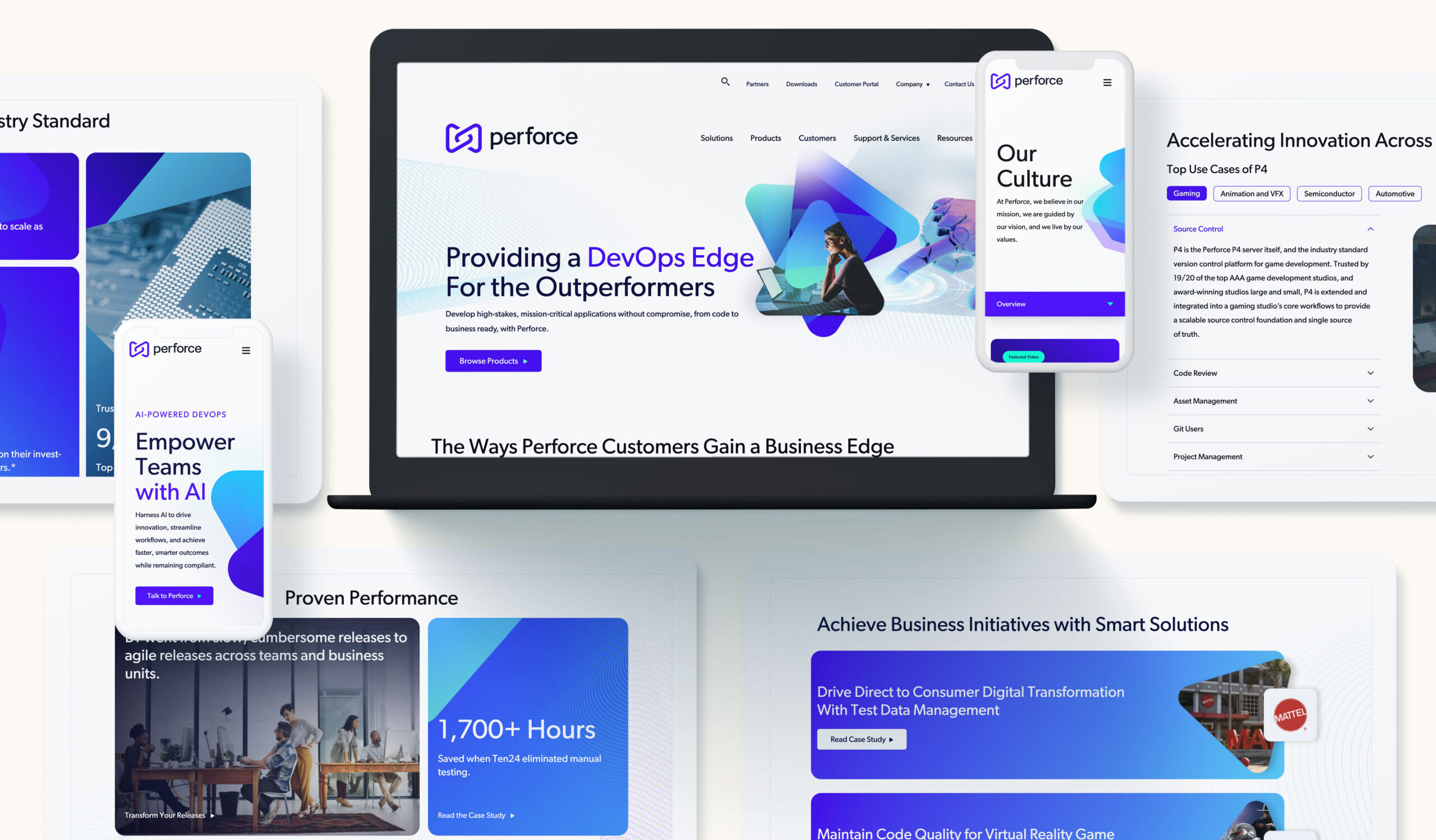
What This Means When Choosing a UX Design Agency
For organizations evaluating a UX design agency, these trends highlight an important reality: UX success depends on more than visual design expertise. The right agency brings strategic thinking, research rigor, and the ability to scale UX across platforms and teams.
In 2026, a strong UX partner understands how to connect user needs with measurable outcomes. They help organizations design experiences that are intuitive, inclusive, and built to adapt as technology and expectations continue to change.
Partner With a UX Design Agency Built for What’s Next
Bluetext partners with organizations to design UX strategies that drive clarity, engagement, and performance across complex digital ecosystems. Our approach combines research, strategy, and design to create experiences that work for users and the businesses behind them.
If you are looking to future-proof your digital experience strategy, connect with Bluetext to discuss how a UX design agency can support your goals in 2026 and beyond.
Marketing a cybersecurity company is fundamentally different from marketing any other category in technology. Buyers operate in an environment defined by high-stakes decisions, rapid threat evolution, and intense scrutiny over vendor credibility. As a result, cybersecurity firms must communicate with clarity, precision, and authority if they want to stand out. Working with a specialized Cyber Security Marketing Agency gives organizations the strategic advantage they need to differentiate themselves, generate qualified leads, and build trust in a market where trust is everything.
The High-Stakes Reality of Cybersecurity Marketing
Cybersecurity buying cycles are shaped by urgency, complexity, and risk. CISOs, CIOs, SecOps teams, and procurement leaders are expected to make defensible decisions on vendors who can safeguard critical data, infrastructure, and operations. Trust is not a “nice-to-have”—it is the foundation of every interaction.
In a landscape with hundreds of point solutions, overlapping capabilities, and constant new entrants, cybersecurity companies cannot rely on generic marketing programs to break through. Messaging must be both technically sound and business-focused, and digital experiences must signal credibility from the moment a prospect discovers your brand. A specialized Cyber Security Marketing Agency understands this context and builds strategies tailored to it.
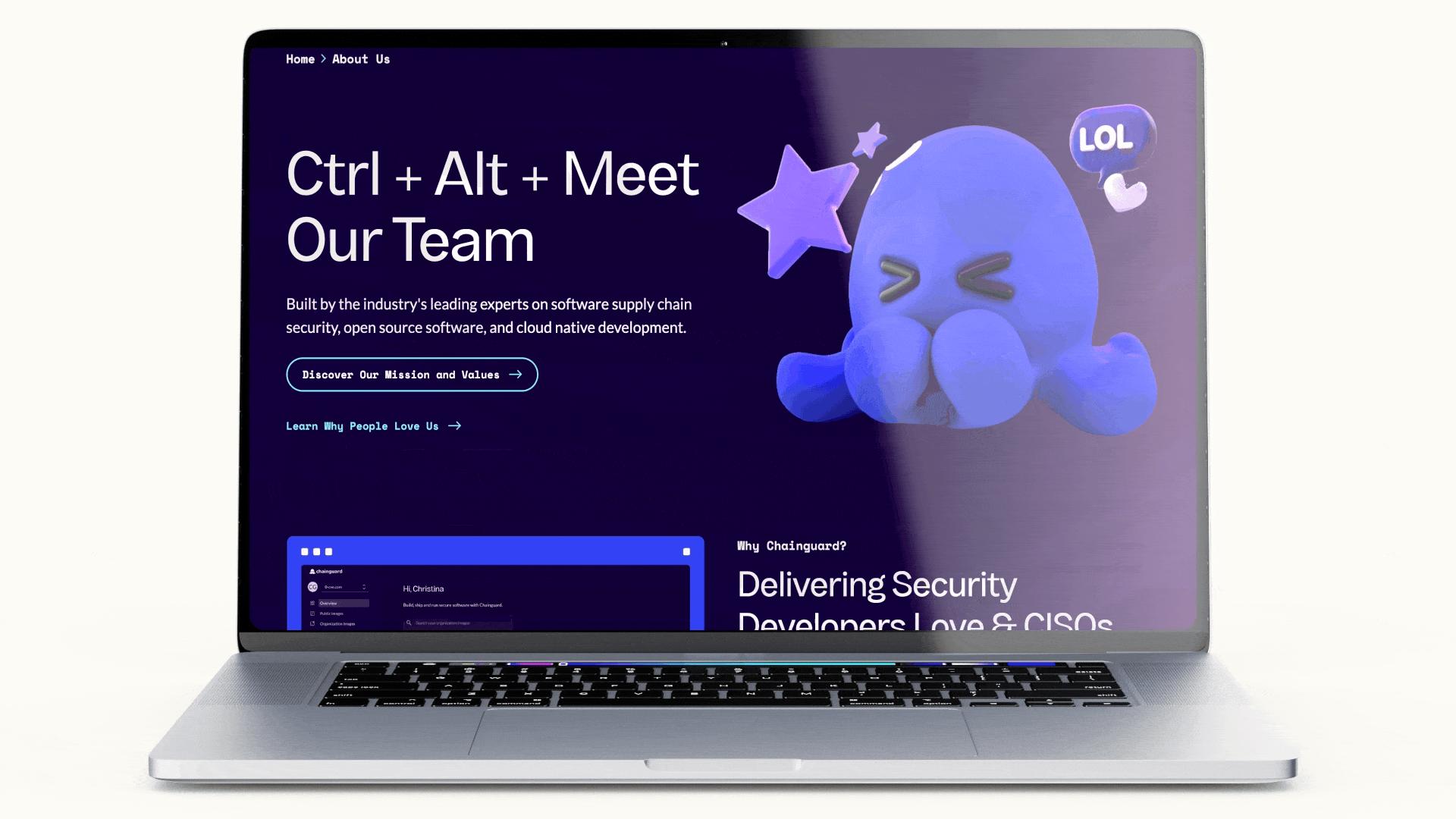
Why Cybersecurity Marketing Requires a Different Approach
Cybersecurity firms face several challenges that set them apart from other B2B technology companies:
- Deep Skepticism Among Buyers
Technical buyers evaluate not only what you claim but whether you can prove it. They expect detailed explanations, real architectures, and third-party validation before they engage. - Complex, Highly Technical Solutions
Cybersecurity products often involve advanced capabilities—from threat intelligence and zero trust architectures to MDR, XDR, IAM, and cloud security. Translating this complexity into accessible, business-aligned messaging requires specialized experience. - Compliance and Regulatory Pressure
FedRAMP, CMMC, SOC 2, ISO, GDPR, and industry-specific mandates influence buying decisions. Marketing must accurately reflect compliance maturity without overstating or oversimplifying. - Evolving Threat Landscapes
Threat actors move fast, and messaging cannot remain static. Cyber firms need agile content strategies that reflect current trends, emerging risks, and new vulnerabilities.
These challenges demand a marketing partner fluent in the nuances of cybersecurity technology, buyers, and industry dynamics.

What a Specialized Cyber Security Marketing Agency Brings to Your Brand
Partnering with an agency that works exclusively or primarily with cybersecurity and advanced technology brands gives your organization strategic advantages that generalist agencies simply cannot match.
Deep Expertise in Cybersecurity Messaging
Specialized agencies understand the technologies, architectures, and use cases security buyers care about. They can translate technical capabilities into business-ready value propositions without diluting accuracy or depth. This accelerates the creation of messaging frameworks, solution positioning, and product marketing materials.
Insight Into Cybersecurity Buyer Personas
A Cyber Security Marketing Agency knows how CISOs, SOC leaders, architects, analysts, and procurement teams evaluate vendors. This includes how they research solutions, what pain points matter, and what content they expect throughout the buying cycle.
Experience Delivering Integrated Cybersecurity Demand Generation
From top-of-funnel thought leadership to ABM programs targeting enterprise and federal buyers, specialized agencies build demand engines that align with security buying cycles. They leverage cybersecurity-specific intent data, multi-channel campaigns, high-value gated assets, and nurture tracks calibrated for long evaluation windows.
Credibility-Centered Brand and Digital Strategy
Cybersecurity brands must signal trust instantly. A specialized agency brings experience designing websites, visual identities, and digital experiences that reflect security, maturity, and technical authority.

Positioning Your Firm for True Differentiation
In a category where many companies claim “real-time detection,” “AI-powered defense,” or “end-to-end security,” meaningful differentiation is rare. A specialized agency helps identify and articulate the white space your firm can authentically own.
This includes:
- Developing a clear and defensible narrative.
- Distilling technical innovation into buyer-friendly language.
- Building a messaging hierarchy that supports sales conversations and product roadmaps.
- Creating solution architectures that communicate how your platform or services fit into broader security ecosystems.
Differentiation is not about louder messaging—it is about smarter, clearer positioning.
Fueling Growth Through a Modern Cybersecurity Demand Engine
Cybersecurity buyers rely heavily on content to inform shortlists and vendor decisions. A Cyber Security Marketing Agency builds integrated demand programs grounded in the needs of these buyers, including:
- Threat briefings, technical guides, and solution overviews.
- Whitepapers, webinars, and demos tailored for security leaders.
- ABM campaigns aligned to enterprise and federal procurement cycles.
- Multi-touch nurture programs built around personas and intent signals.
This approach ensures every campaign drives meaningful engagement and qualified pipeline, not vanity metrics.
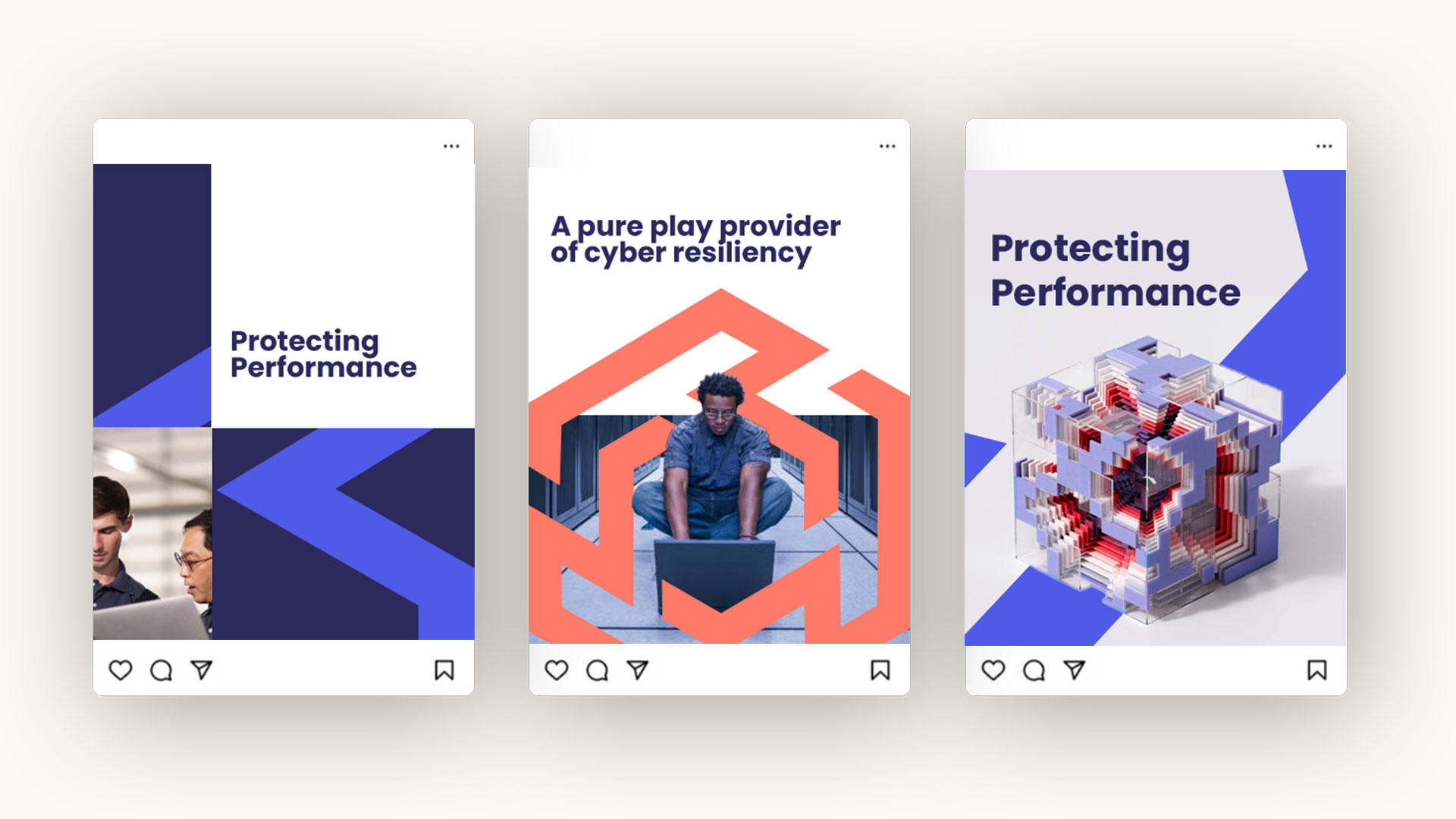
Building a Trusted Digital Presence
Your website and digital content are often the first point of validation for cybersecurity buyers. A specialized agency knows how to build experiences that project maturity, technical credibility, and ease of navigation.
Best practices include:
- Clear articulation of your platform or services.
- Conversion paths that align to cybersecurity buyer behavior.
- High-value content tied to industry trends, emerging threats, and regulatory changes.
- SEO strategies designed for a competitive, rapidly shifting search landscape.
Effective cybersecurity marketing does not rely on trends—it relies on clarity, authority, and consistency.
Elevating Brand Authority Through Thought Leadership
Security leaders look for partners who demonstrate depth, foresight, and expertise. Thought leadership is one of the most effective tools for establishing this authority.
A Cyber Security Marketing Agency supports brands by developing:
- Research-backed threat reports.
- Executive commentary for industry publications.
- Podcast and video content featuring SMEs.
- Analyst engagement strategies that enhance visibility.
- Perspectives on emerging threats, evolving regulations, and best practices.
The result is a brand that feels credible, informed, and indispensable to security conversations.
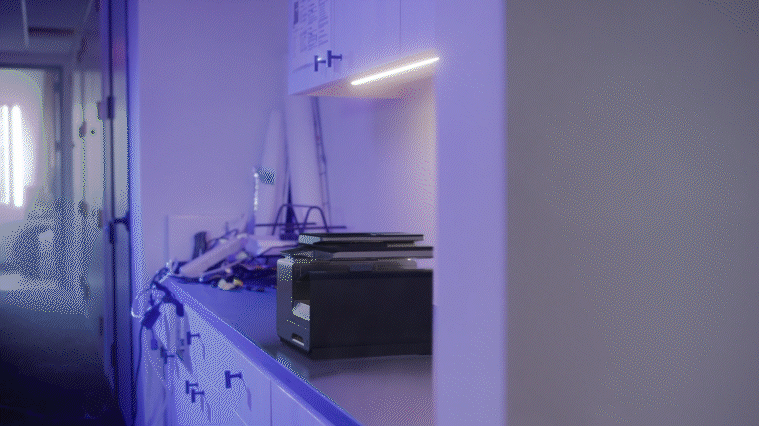
Why Bluetext Is the Right Partner for Cybersecurity Brands
Bluetext has a long track record of supporting cybersecurity, federal, defense, and advanced technology organizations as they scale and evolve. Our team understands the complexity of cybersecurity products and the sophistication of the audiences evaluating them. We bring deep experience in branding, digital experience design, product marketing, campaigns, and demand generation tailored to the needs of security buyers.
Whether your firm is entering a new market, rethinking its narrative, building a modern website, or launching integrated demand programs, Bluetext helps you put your best foot forward—and stay ahead of competitors who are moving fast.
To learn how Bluetext can support your cybersecurity marketing strategy, contact us today.
In today’s competitive procurement landscape, first impressions online matter more than ever. Agency evaluators rarely rely solely on in-person meetings or phone calls—they start their research online. From visiting your website to downloading PDFs or Googling your name, buyers are evaluating your credibility, expertise, and relevance before they ever pick up the phone.
Understanding what evaluators are really looking for—and optimizing every touchpoint—can make the difference between being shortlisted or overlooked. This blog explores how to align your digital presence with buyer expectations and build trust at every stage of the procurement process.
Why Your Online Presence is Critical for Procurement
Procurement evaluators rely heavily on digital research to save time and validate potential vendors. Your website, online profiles, and downloadable content are often their first exposure to your organization. A polished, informative, and credible digital presence can establish trust immediately. Conversely, outdated information, missing details, or poor navigation can raise red flags and push buyers toward competitors.
The key is ensuring that every online interaction answers a buyer’s questions efficiently and reinforces your organization’s professionalism and expertise.
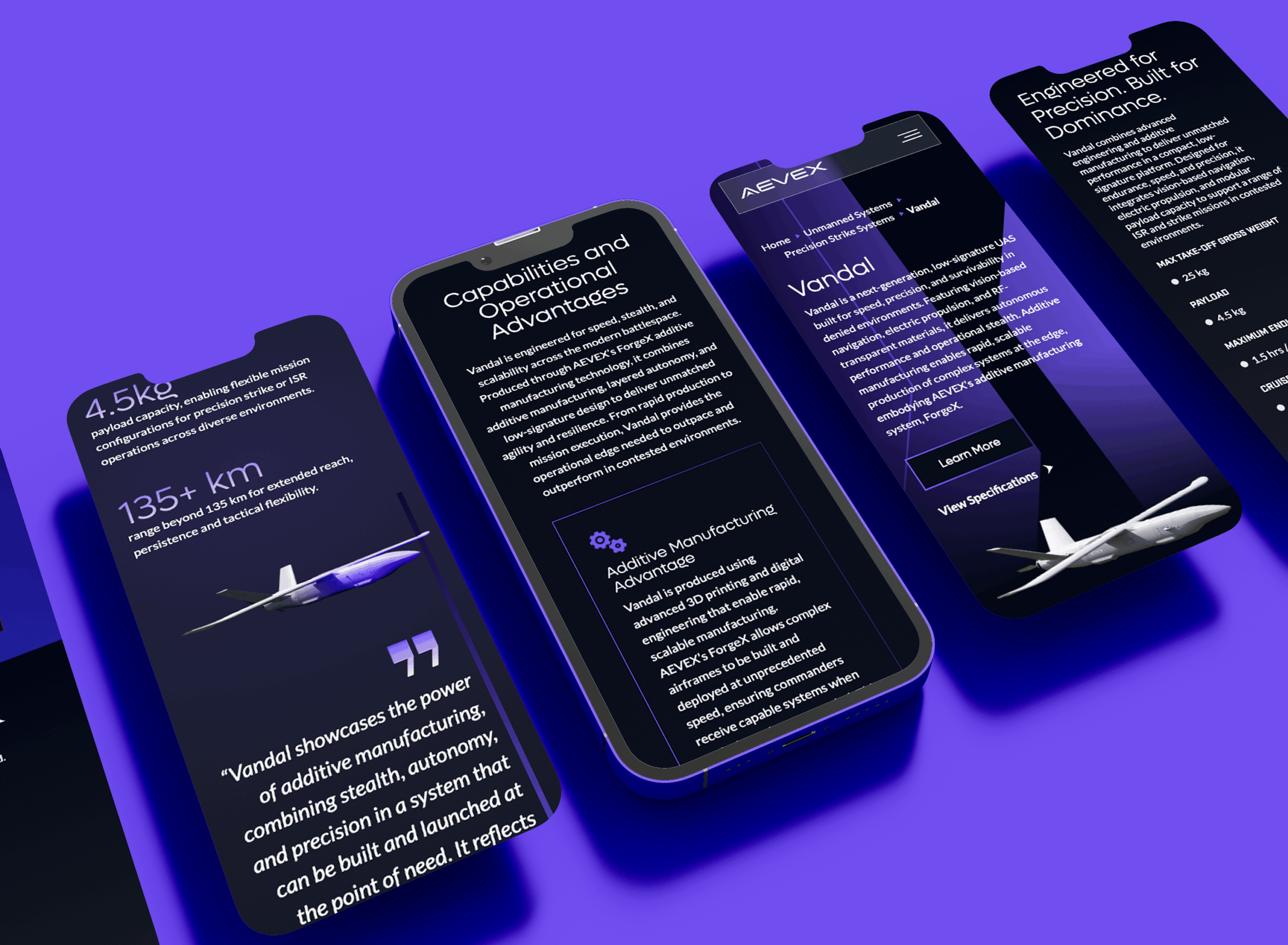
What Buyers Check First: Websites and Online Profiles
When evaluators visit your site or online profiles, they’re looking for clarity, credibility, and relevance. Some of the top elements they notice include:
- Clear messaging: What you do, who you serve, and why it matters should be immediately obvious.
- Client examples and case studies: Demonstrates experience and past success.
- Certifications and awards: Signals trustworthiness and compliance.
- Navigation and structure: Information should be easy to find without frustration.
Missing or inconsistent information can quickly erode confidence. A well-structured website gives evaluators the reassurance they need to continue engagement.
Downloadable Content: PDFs, Case Studies, and Whitepapers
Many evaluators download PDFs, whitepapers, and case studies as part of their research. These materials should provide concise, actionable insights into your capabilities. Key considerations include:
- Clarity: Avoid jargon and keep content focused on what matters to the buyer.
- Visual appeal: Use graphics, charts, and formatting that make content easy to scan.
- Results-focused: Highlight measurable outcomes and past successes.
Strong downloadable content helps buyers make informed decisions quickly and reinforces your credibility. Weak or overly complex documents, on the other hand, can be a barrier to engagement.

Search Behavior: Googling Your Name and Brand
Evaluators often research your brand and key leaders online. They look for thought leadership, news mentions, and industry recognition to gauge expertise and reputation. This makes SEO, AEO (Answer Engine Optimization), online reviews, and consistent branding more important than ever.
Common pitfalls include outdated press releases, missing leadership bios, or inconsistent messaging across channels. Maintaining accurate, accessible, and positive online visibility ensures evaluators find credible and relevant information when they search for you.
Evaluators’ Key Priorities in the Procurement Journey
Procurement teams generally focus on four main priorities during their online research:
- Trustworthiness: Can they rely on you to deliver on promises?
- Evidence of expertise: Do you have the experience and capability to meet their needs?
- Ease of access to information: Can they quickly find answers to critical questions?
- Alignment with their goals: Do your solutions or services match their agency or organizational priorities?
Aligning your digital presence with these priorities ensures evaluators can confidently move forward with your organization.
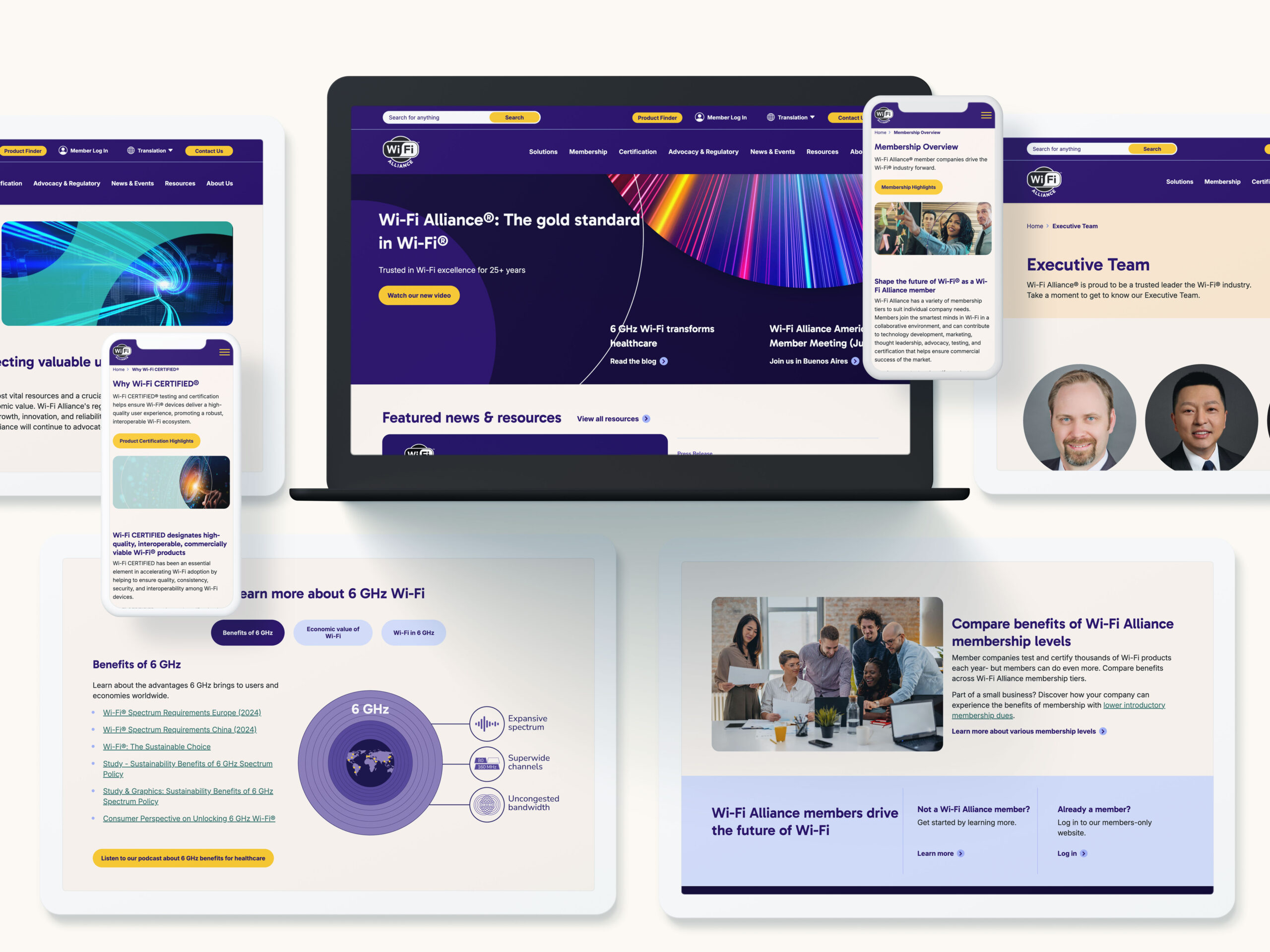
Aligning Your Digital Experience With Buyer Expectations
To meet buyer expectations, organizations should:
- Audit websites regularly: Ensure messaging, client examples, and leadership bios are current.
- Optimize downloadable content: Keep PDFs concise, visually clear, and results-focused.
- Invest in SEO and thought leadership: Ensure your organization appears authoritative in search results.
- Maintain consistent branding: Across websites, social media, and online documents.
By proactively optimizing every touchpoint, you reduce friction in the procurement process and increase your chances of being shortlisted.
Final Takeaway
Every online interaction shapes a buyer’s perception and influences procurement decisions. By understanding what evaluators look for—websites, downloadable content, and search visibility—you can create a digital presence that builds trust and drives engagement.
Ready to strengthen your procurement-focused digital presence? Contact Bluetext to ensure your website, content, and online profiles meet buyer expectations and set your organization apart in competitive evaluations.
For years, B2B marketing was shaped by slow, steady macro trends—industry shifts, technology cycles, and long-term buyer behavior. Today, the tempo has changed. Short-term cultural and consumer signals now ripple into the B2B world faster than ever. Even highly technical buyers are influenced by the same content formats, social patterns, and conversation cues shaping modern culture.
That’s why micro trends—those fast-moving signals across platforms, communities, and conversations—have become essential inputs for brand positioning and campaign strategy. Understanding these patterns gives marketing teams an early read on where buyer needs are heading and what will resonate next.
What “Micro Trends” Really Mean for B2B Marketers
A micro trend isn’t a passing meme or a one-day viral moment. It’s a concentrated shift in behavior or conversation that hints at a deeper need. In B2B, micro trends often surface in places like LinkedIn post formats, rising search terms, Slack community threads, analyst commentary, or conversations around emerging technologies.
For example, spikes in discussions around AI safety, cybersecurity trust, operational resilience, or sustainability certifications often predict shifts in how buyers evaluate solutions. Micro trends help marketers separate what’s noise from what’s quietly becoming a new expectation.
How Micro Trends Shape Stronger Brand Positioning
Brand positioning shouldn’t change every quarter—but it should stay responsive to what buyers care about. Micro trends offer an early signal of emerging priorities and give marketers data-backed reasons to refine how they articulate their value.
Sometimes this means elevating new proof points, emphasizing different product benefits, or reframing old capabilities for a new context. A company that once led with efficiency, for example, may find buyers responding more strongly to themes of risk mitigation, security, or long-term scalability if those topics are trending across conversations.
Small shifts in emphasis can create major advantages in relevance.

Using Micro Trends to Build More Agile Campaigns
Campaign agility isn’t about reacting to everything—it’s about acting quickly on the right things. Micro trends allow teams to spot opportunities for rapid activation: a new content angle, an emerging thought-leadership topic, or a timely explainer piece answering a question buyers suddenly care about.
Real-time signals also help marketers retire or update assets that no longer match the conversation. When done well, micro-trend-driven agility leads to better creative alignment, stronger engagement across channels, and smarter use of budget.
Where Micro Trends Come From: The Signals That Matter
B2B marketers can find meaningful micro trends across four key categories:
Platform Signals
Shifts in content style—like TikTok-inspired storytelling appearing on LinkedIn, or rapid-fire Q&A threads becoming popular—show how buyers prefer to learn, not just what they care about.
Search Signals
When question-based searches or problem-driven phrases spike, they offer clues about new pain points or emerging evaluation criteria.
Cultural Signals
Economic headlines, workforce sentiment, regulatory chatter, and industry debates all influence the tone buyers expect from brands.
Technology Signals
Founders promoting new ideas, sudden adoption of emerging tools, or new product categories gaining momentum can reshape messaging priorities.
In isolation, each signal is small. Together, they reveal what’s gaining traction—and what B2B brands should prepare for.
Testing and Scaling Micro-Trend Insights
Not every micro trend deserves a full campaign. Smart teams validate early insights with quick tests: message variations, gated vs. ungated content, LinkedIn polls, or targeted paid experiments.
When an idea consistently performs, it becomes a candidate for larger activation. Some micro insights evolve into evergreen thought-leadership platforms; others influence product messaging, SEO strategy, or brand storytelling. The key is building a lightweight testing engine that allows ideas to scale naturally.
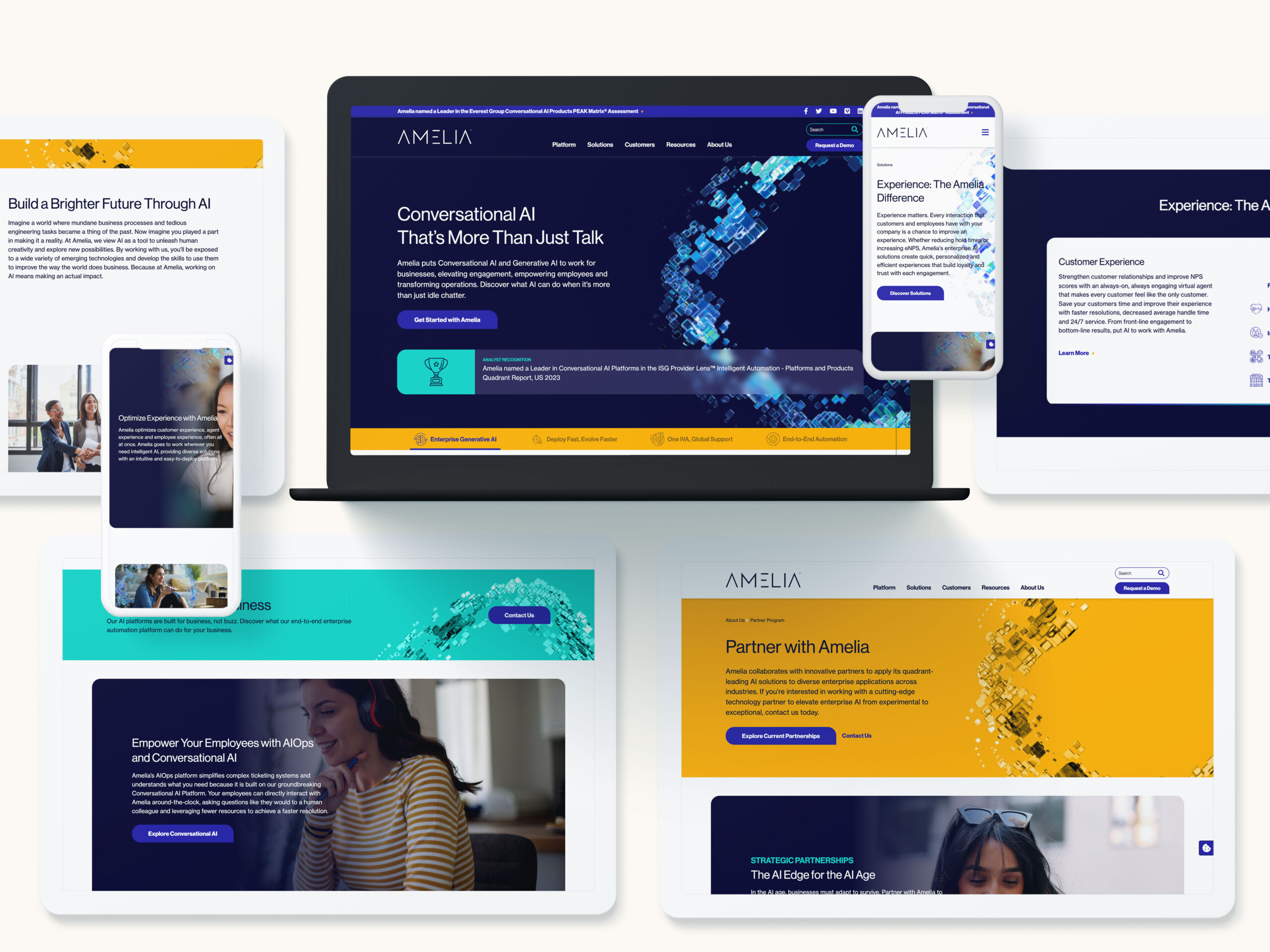
Avoiding the Pitfalls of Trend-Chasing
Trend responsiveness can go wrong when teams confuse speed with strategy. Over-indexing on short-term signals can lead to fragmented messaging, inconsistent positioning, or campaigns that age too quickly. The antidote is a clear filter: Does this trend align with our brand? Does it solve a real customer need? Does it fit the direction of our category?
Micro trends should enhance brand focus—not dilute it.
Building a Trend-Responsive B2B Marketing Engine
Trend-driven marketing works best when supported by flexible systems: modular creative assets, cross-functional collaboration, real-time dashboards, and streamlined approval processes. When teams are equipped to move quickly, trend insights become a competitive advantage instead of a scramble.
The brands that excel are those that combine strategic discipline with the speed to act when it matters.
Why Micro Trends Lead to Better Outcomes
Micro trends reveal what buyers care about before it shows up in traditional research. They help brands stay modern, relevant, and differentiated in categories where messages often sound the same. When B2B organizations learn to read early signals, they’re better positioned to anticipate macro shifts—before those shifts reshape the market.
In a landscape where attention is scarce and expectations shift fast, micro-trend intelligence helps B2B marketers build stronger brands and smarter campaigns.
Ready to Turn Micro Trends Into Strategic Moves?
Bluetext helps leading B2B organizations translate emerging signals into clear, compelling brand and marketing strategies. If your team is ready to capture what’s coming next, we’re here to help.
In the fast-paced world of digital marketing, first impressions are formed in milliseconds. These split-second judgments often determine whether a visitor stays on your site, explores your services, or leaves. People decide emotionally first and rationally second. That is why thoughtful design, including colors, shapes, and layout, is more than decoration. It is strategic.
Designing with emotion means intentionally crafting visual experiences that build trust, guide perception, and create urgency. When done well, it can subtly influence buyer behavior and move prospects from curiosity to conversion. Let’s explore how colors, curves, and layout psychology help brands connect, convince, and close deals.
The Psychology of First Impressions
Research shows users form opinions about a website in under a second. That first glance tells them if a brand is credible, professional, and worth their time. These impressions are emotional as much as they are visual.
Visual cues like color, contrast, and spacing communicate confidence, clarity, and competence. In B2B, where decisions are complex and high-stakes, a website that evokes trust and clarity can make the difference between a lost lead and a signed contract.
Design that resonates emotionally does more than look good. It persuades.
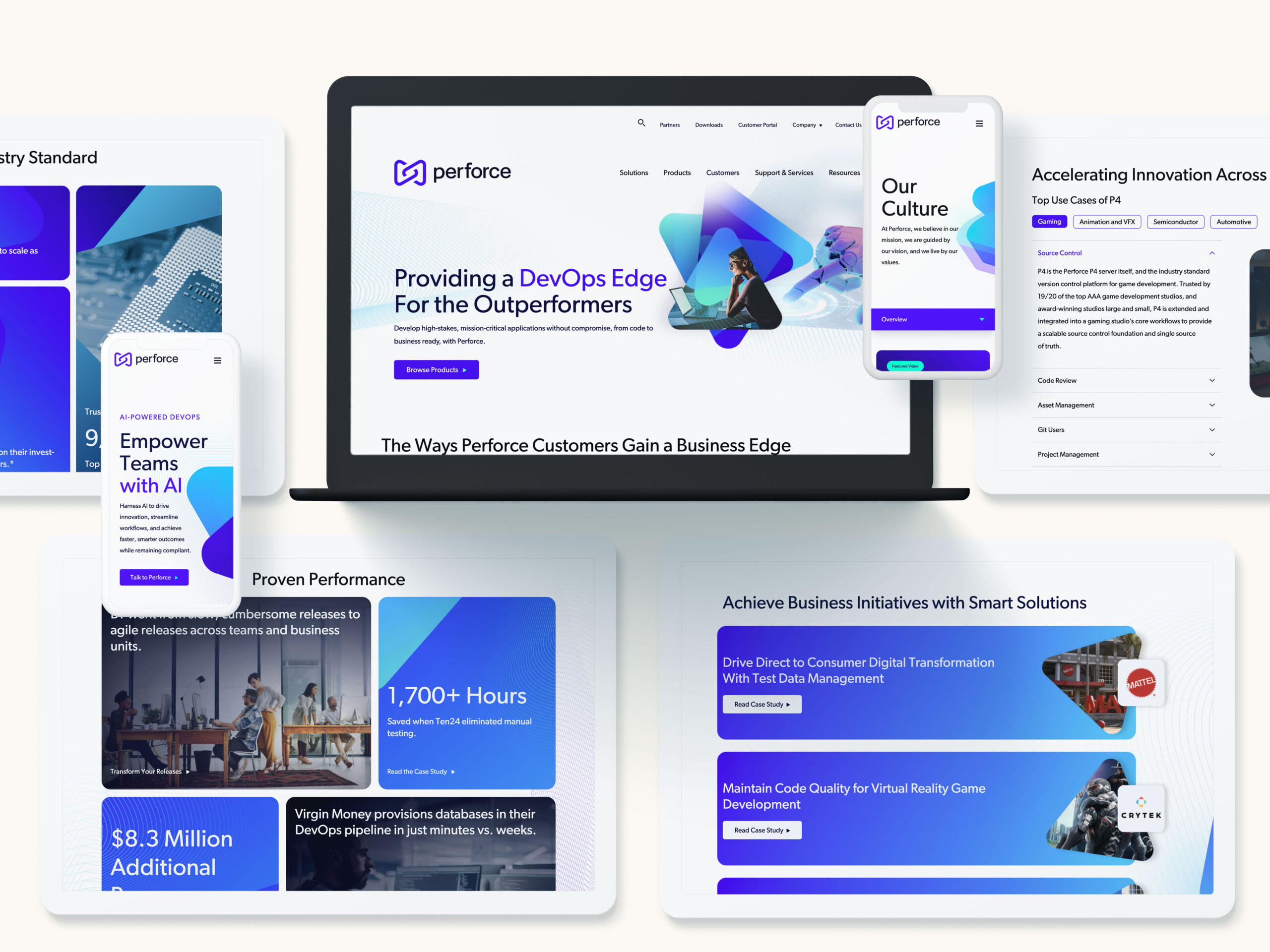
The Language of Color: Building Trust, Urgency, and Desire
Colors carry psychological associations that influence perception.
- Blue signals trust, stability, and professionalism. It works well for finance, tech, and telecommunications.
- Red creates urgency and draws attention, making it ideal for calls to action or limited-time offers.
- Green conveys growth, balance, and reliability. It is often used by sustainability-focused brands or B2B tech companies.
It is not just the choice of color, but how it is used. Contrast, saturation, and balance guide the eye and reinforce hierarchy. Choosing colors that align with your goals helps visitors feel confident, focused, and ready to take action.
The Science of Shape: Why Curves Feel Safer Than Corners
Shape psychology is powerful but often overlooked. Rounded edges and curves are perceived as approachable, friendly, and safe. Sharp angles communicate precision, assertiveness, or caution.
Buttons, icons, and content containers with curves can subtly encourage interaction. Tech companies like Apple and Google use rounded designs to suggest simplicity, reliability, and accessibility. Curves reduce friction and make digital experiences feel intuitive.
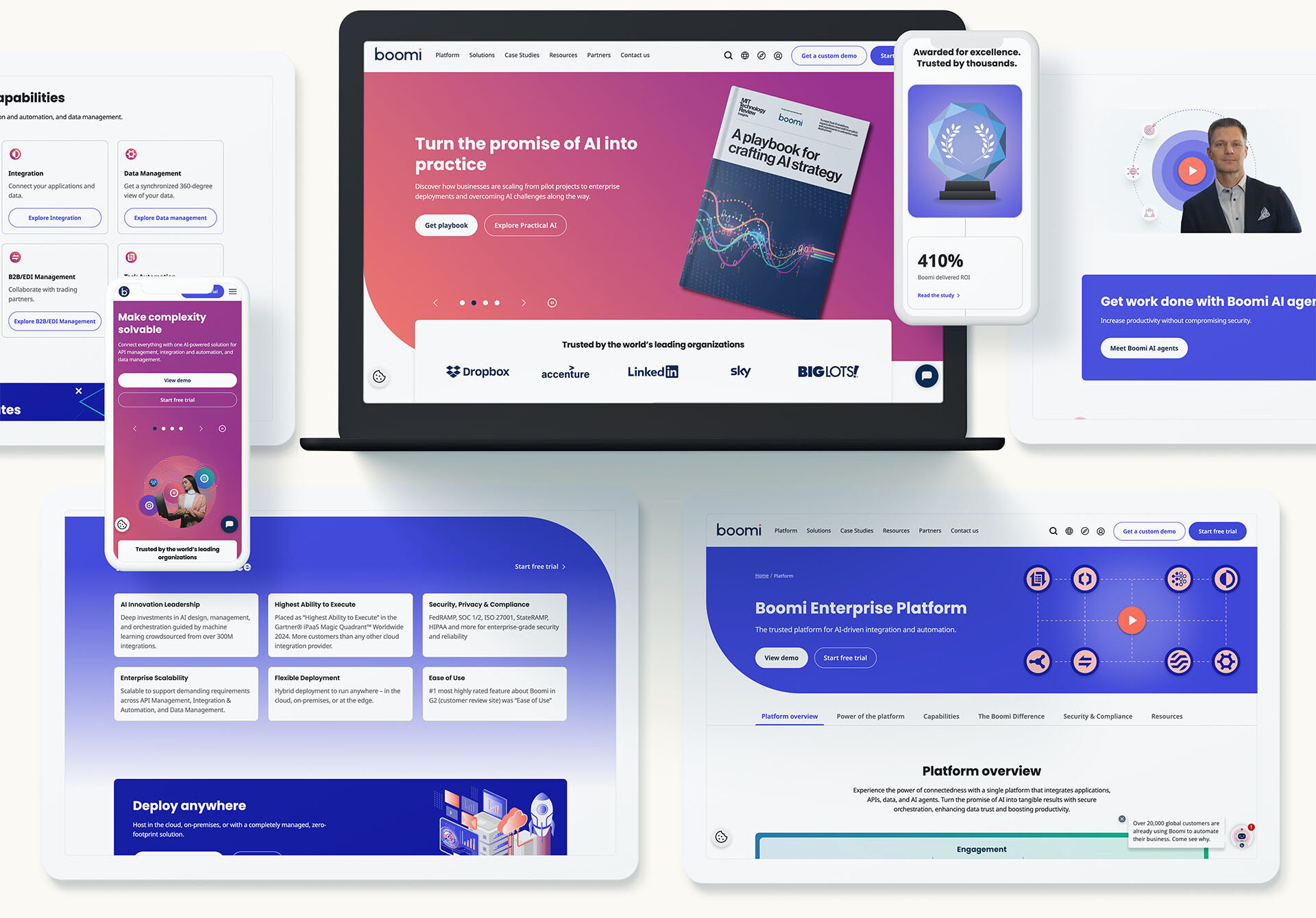
Layout, Space, and Flow: Designing for Calm and Clarity
Design is more than color and shape. Structure matters. White space, visual hierarchy, and symmetry guide attention and set emotional tone.
Cluttered pages can cause frustration. Balanced layouts signal professionalism and calm. Proper spacing highlights important content, guides the eye naturally, and makes your messaging easier to digest. Aligning layout with the buyer journey creates a subconscious flow that improves engagement.
Designing for B2B Audiences: Emotion Meets Authority
Some brands think emotional design only works for consumer audiences. The truth is decision-makers in B2B are human, and humans respond to emotion.
Subtle cues, like accent colors, consistent shapes, and clean layouts, communicate authority and reliability. For tech audiences, combining bold structures with approachable accents conveys professionalism while remaining human. Strategic emotion makes complex offerings feel accessible without reducing credibility.
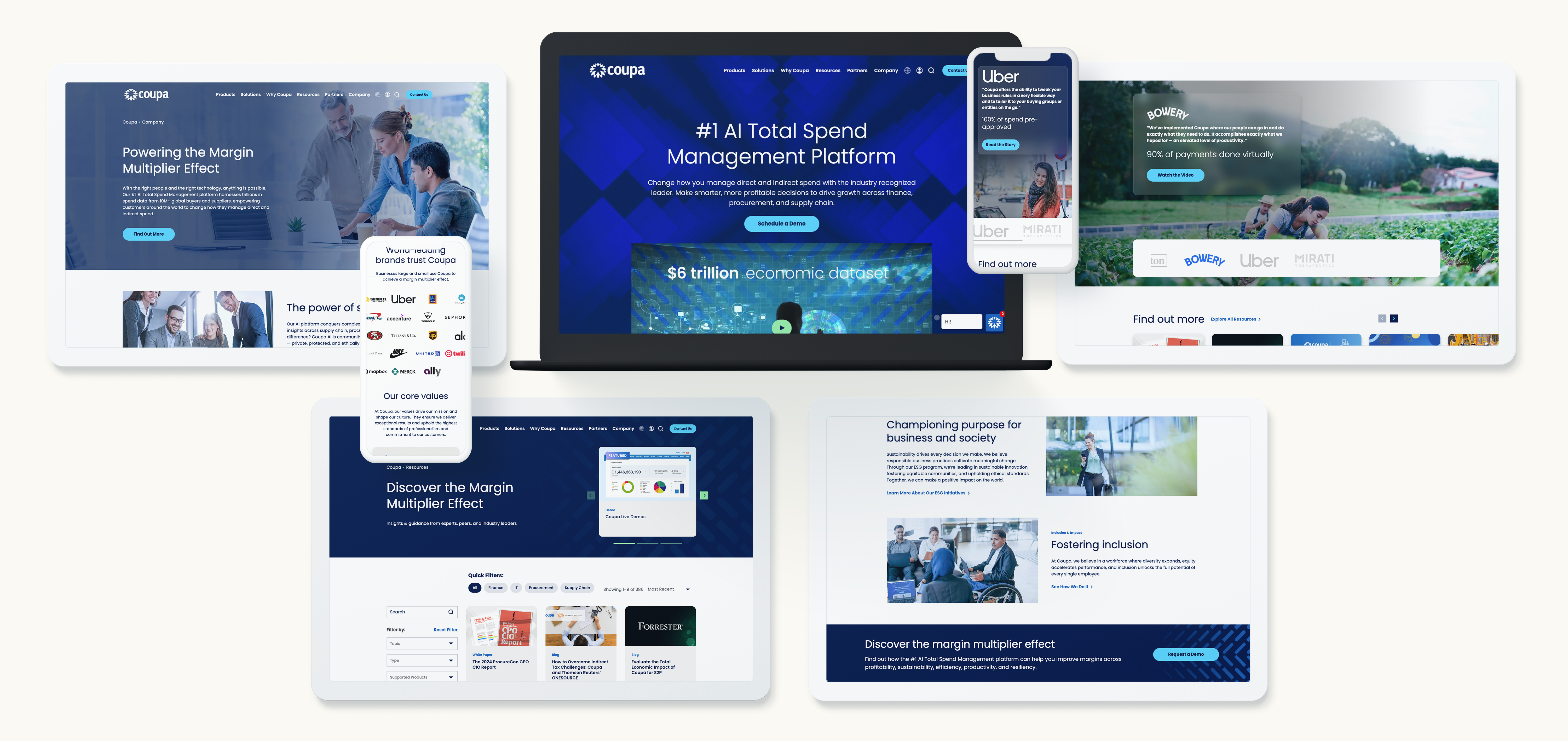
From Aesthetics to ROI: Measuring the Emotional Impact of Design
Emotional design can be measured through engagement metrics. Key indicators include:
- Bounce rate and time on page
- Form submissions and content downloads
- Scroll depth and navigation patterns
- Brand recall from surveys or heat maps
User testing and analytics help validate which design choices foster trust and guide action. Well-crafted design becomes not just creative but an engine for conversion.
Designing with Emotion and Intention with Bluetext
Design that sells is intentional. Every color, curve, and layout choice should align with the emotions you want your audience to feel and the actions you want them to take.
At Bluetext, we combine behavioral insight, design strategy, and creative execution to craft experiences that engage emotionally and perform strategically. From color psychology to motion design, we help brands create digital experiences that look great and close deals.
Ready to design with purpose and emotion? Contact Bluetext to build experiences that inspire trust, guide perception, and drive measurable results.
The world of search is evolving faster than ever. With Google rolling out its Search Generative Experience (SGE), AI is no longer just a tool behind the scenes—it’s now directly shaping how users find and consume information. For marketers, this shift presents both exciting opportunities and significant challenges. Traditional SEO tactics, once focused mainly on keywords and backlinks, are being supplemented—and sometimes disrupted—by AI-driven summaries that answer questions directly in search results.
Understanding how generative search works and how it affects organic visibility is now essential for anyone managing content or digital marketing. This guide explores SGE, its implications for SEO, and actionable strategies for marketers looking to stay ahead.
What is Google’s Search Generative Experience (SGE)?
Google’s Search Generative Experience is an AI-powered layer within search that generates concise, context-aware responses for user queries. Unlike traditional search, which relies solely on ranking web pages based on relevance, SGE synthesizes information from multiple sources, often providing users with immediate answers without requiring them to click through.
For example, instead of showing ten links for a “best project management tools” query, SGE may provide a summary comparing tools, highlighting pros and cons, and offering suggested next steps. The system also includes citations and suggested follow-up queries, giving users a more interactive search experience.
SGE is currently being rolled out across various markets and continues to expand, making it crucial for marketers to understand how AI-generated content impacts visibility, traffic patterns, and user behavior.
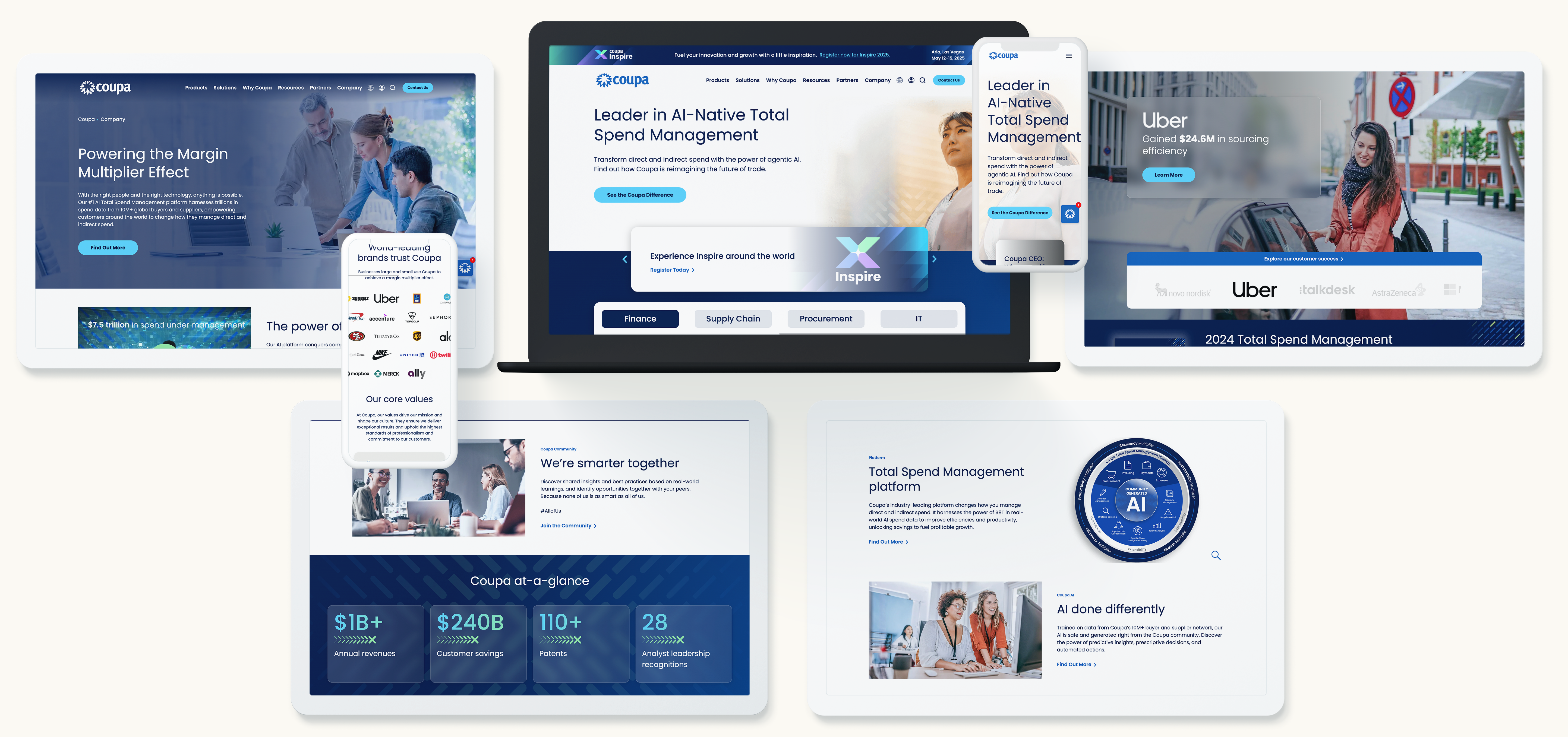
How Generative Search Changes SEO Fundamentals
The introduction of generative search alters the core principles of SEO in several ways:
- Shift from Keywords to Intent: Instead of optimizing purely for keywords, marketers must focus on answering questions thoroughly and accurately. SGE prioritizes content that provides clear, relevant, and contextually accurate information.
- Impact on Click-Through Rates: AI-generated summaries may reduce clicks to traditional web pages since users get answers directly in the search interface. This makes it critical to appear as a credible source within the summary itself.
- Authority and Trust Matter More: Generative search emphasizes authoritative content. Google favors content from sources with expertise, reliability, and trustworthiness, making brand reputation more important than ever.
- Structured Data is Essential: AI models rely on structured content to interpret context effectively. Proper use of schema markup can increase the likelihood your content is cited in AI-generated responses.
This evolution doesn’t make traditional SEO irrelevant—it changes the rules, requiring a deeper focus on content quality, authority, and AI-readability.

Adapting Your SEO Strategy for the SGE Era
Staying competitive in a generative search landscape requires updating your SEO strategy. Here are key approaches:
1. Prioritize Content Depth and Expertise
Short, surface-level content is less likely to be selected for AI-generated answers. Create comprehensive resources that thoroughly address topics, answer potential follow-up questions, and demonstrate expertise.
2. Optimize for Featured Snippets and Summaries
SGE relies heavily on structured summaries. Format content with clear headings, bullet points, tables, and concise paragraphs to make it easily digestible for AI models.
3. Invest in Structured Data and Schema
Use schema markup to signal to Google what your content is about, who authored it, and the type of information it contains. Properly structured content is more likely to be surfaced in generative summaries.
4. Focus on User Intent and Search Context
Understand the questions your audience is asking, not just the keywords they’re typing. Research intent, related queries, and problem-solving content to align with AI’s focus on context over keywords.
5. Monitor AI-Driven SERP Changes
Track how traffic and engagement shift as generative search expands. Regularly review which queries your content appears in, adjust messaging as needed, and update underperforming pages to maintain visibility.

Challenges and Considerations
Adapting SEO for generative search comes with challenges:
- Attribution Difficulty: When users get answers directly from AI, measuring traffic impact becomes trickier. Brands must rethink metrics beyond traditional clicks.
- Balancing AI Optimization with Readability: Content optimized for AI models must remain engaging and accessible to human readers. Over-optimization can harm user experience and trust.
- Keeping Up with Algorithm Changes: Google’s AI models are constantly evolving. Marketers need flexible strategies and regular monitoring to maintain performance.
- Ensuring Accuracy and Authority: AI-generated summaries depend on trustworthy sources. Brands must prioritize accuracy, citations, and expertise to avoid being misrepresented.
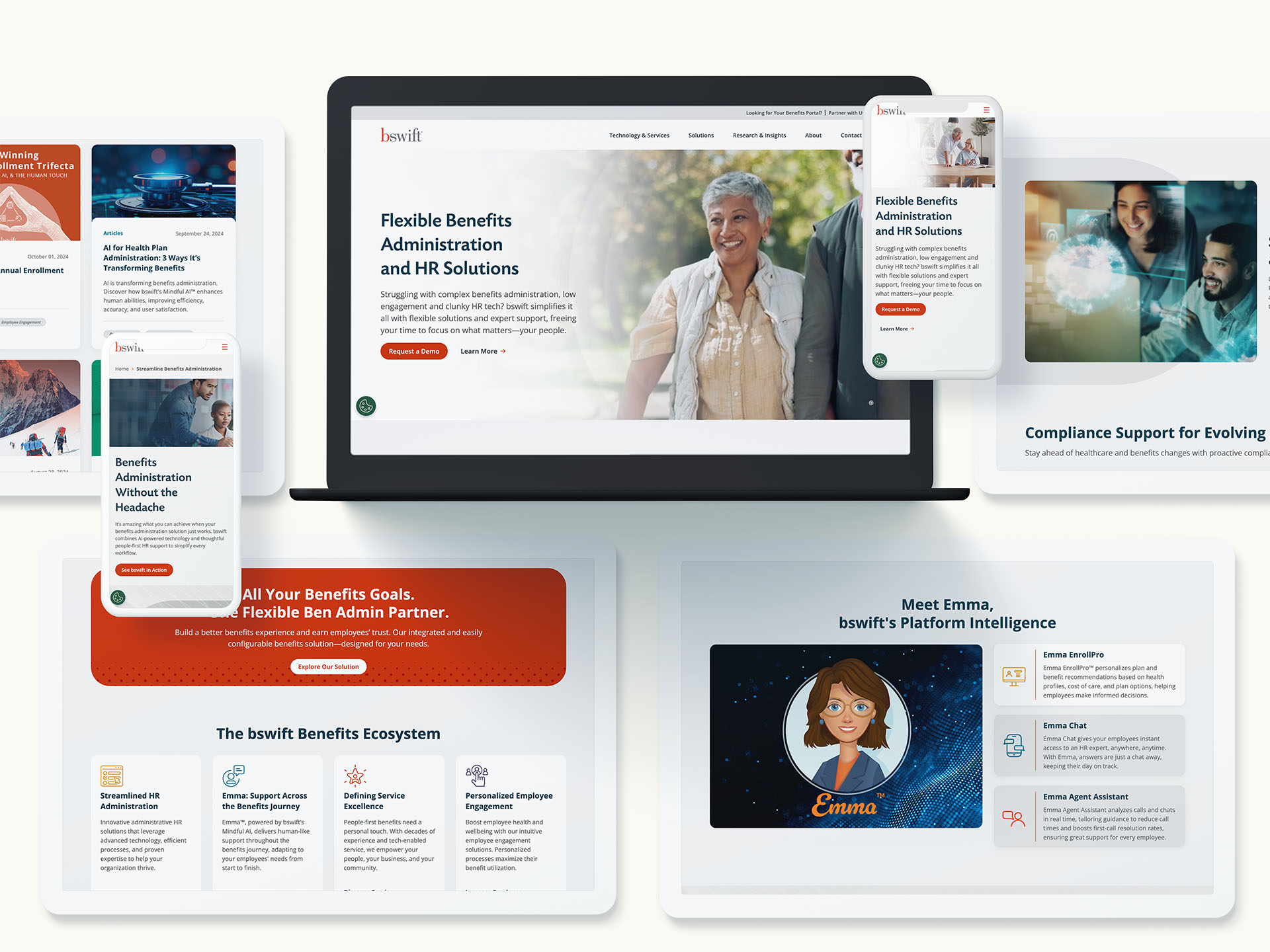
Actionable Takeaways
Generative search represents a fundamental shift in how information is discovered and consumed online. Marketers who adapt early by prioritizing authority, context, and structured content will gain an advantage.
Key takeaways:
- Focus on content depth and expertise.
- Optimize for summaries and structured data.
- Align content with user intent rather than just keywords.
- Monitor AI-driven SERPs and iterate strategies regularly.
The future of SEO is AI-driven, but combining traditional optimization with generative search strategies ensures your brand remains visible, credible, and authoritative.
TL;DR — The 6 Big Takeaways
- “Vibe working” captures the shift from rigid productivity toward intuitive and emotionally intelligent collaboration.
- Modern brands succeed when they focus on coherence, emotion, and energy instead of consistency alone.
- In design, the real competition is not features or pixels but how an experience feels.
- Creative teams are evolving from rule keepers to vibe curators, shaping rhythm, tone, and feeling across every touchpoint.
- Fast design tools now make it possible to prototype moods and test emotional resonance at scale.
- The next evolution is building vibe systems that manage brand emotion in real time across all channels.
From Productivity to Presence: The Rise of Vibe Working
Across creative industries, a new language is replacing the old talk of workflows and deliverables. The phrase “vibe working” describes a style of collaboration that relies on intuition and rhythm instead of rigid process.
Rather than grinding through linear steps, teams now move through projects like musicians in a jam session, improvising and refining until everything feels right. The rhythm, tone, and flow of work have become as important as the final output.
This cultural change marks the end of the optimization era and the start of an intuition era where sensitivity and emotional awareness define creative excellence.
The Emotional Economy of Brands
Branding used to be about clear messaging. Today it is about mood.
Consumers no longer just buy a product or service. They connect with a feeling that a brand evokes. Apple feels like minimalist calm. Liquid Death channels skate-punk energy. Nike moves like a heartbeat in motion.
As industries become more crowded and features converge, emotion becomes the key differentiator. Brands that master emotional coherence across every channel — website, packaging, experience, tone, and visual rhythm — build stronger loyalty and trust.
The most advanced marketing teams now describe brand identity using sensory terms such as rhythm, warmth, and flow. They are not designing assets; they are designing atmospheres.
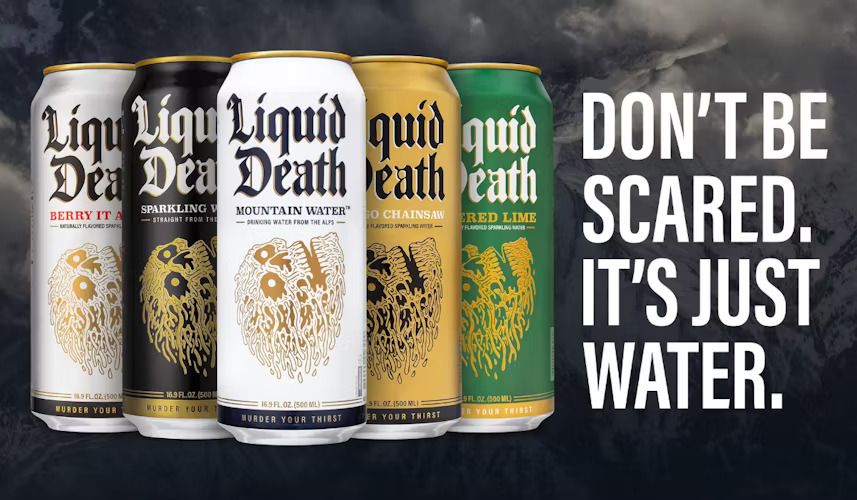
Vibe Design: When UX Feels Human Again
User experience once focused only on usability. In the new creative landscape, it has become an act of emotional choreography.
The best digital experiences do not simply guide behavior; they reflect human emotion. Duolingo’s playful messages, Spotify’s personalized playlists, or Apple’s subtle touch feedback all build emotional trust through small, intentional gestures.
Vibe design treats typography, motion, and microcopy as instruments in an emotional orchestra. Each note matters. The result is not just functionality but a connection that feels alive and human.
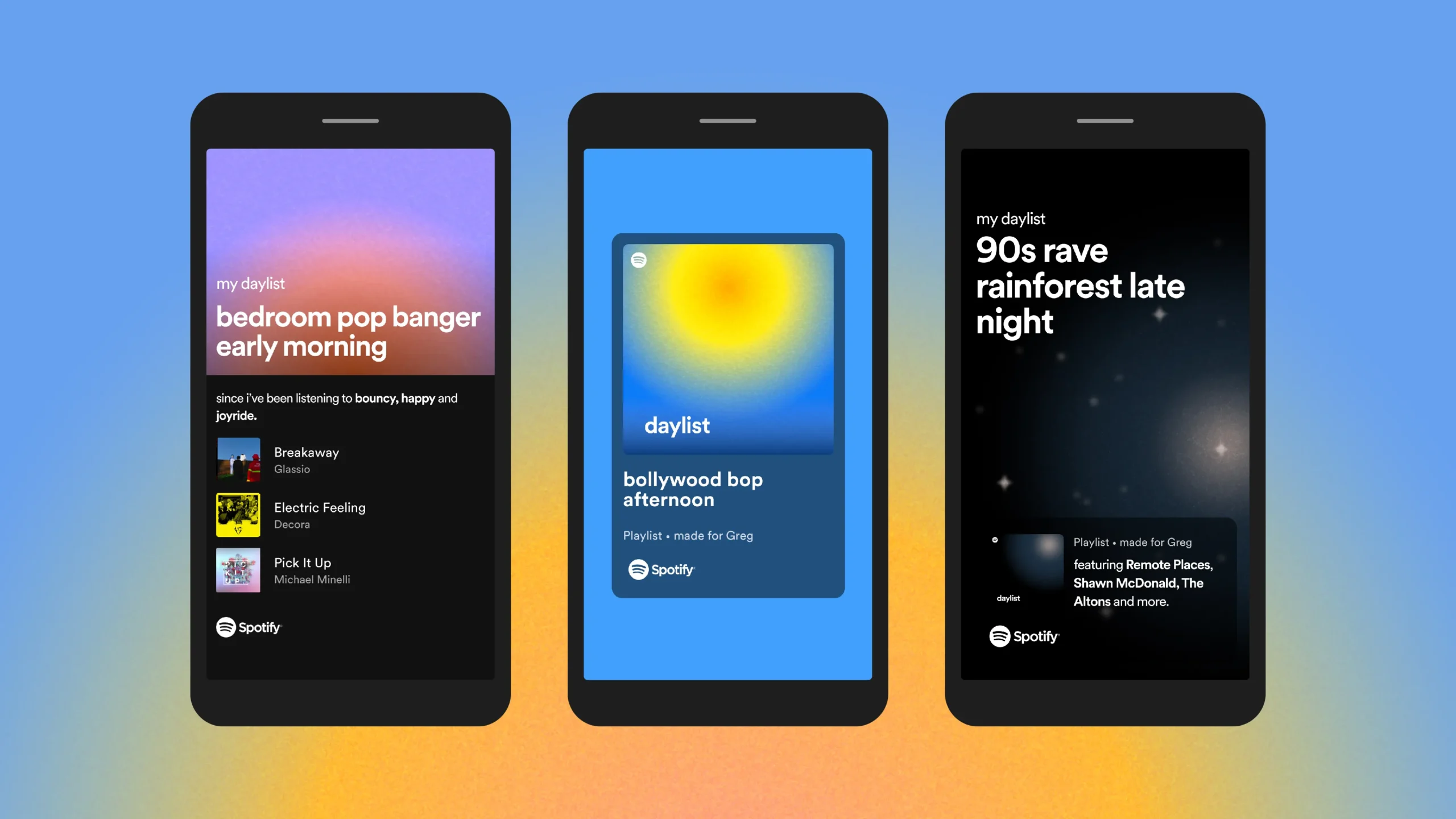
From Design Systems to Mood Systems
For years, brand guidelines dictated what things should look like. Now, mood systems define how things should feel.
Instead of rigid manuals, modern brands create living ecosystems that adjust to context, audience, and even time of day. Nike Run Club shifts its tone depending on a runner’s mindset. Streaming platforms customize visuals and sound to match each viewer’s taste.
This flexibility is not a lack of discipline. It is a new kind of coherence that mirrors human emotion and context in real time.
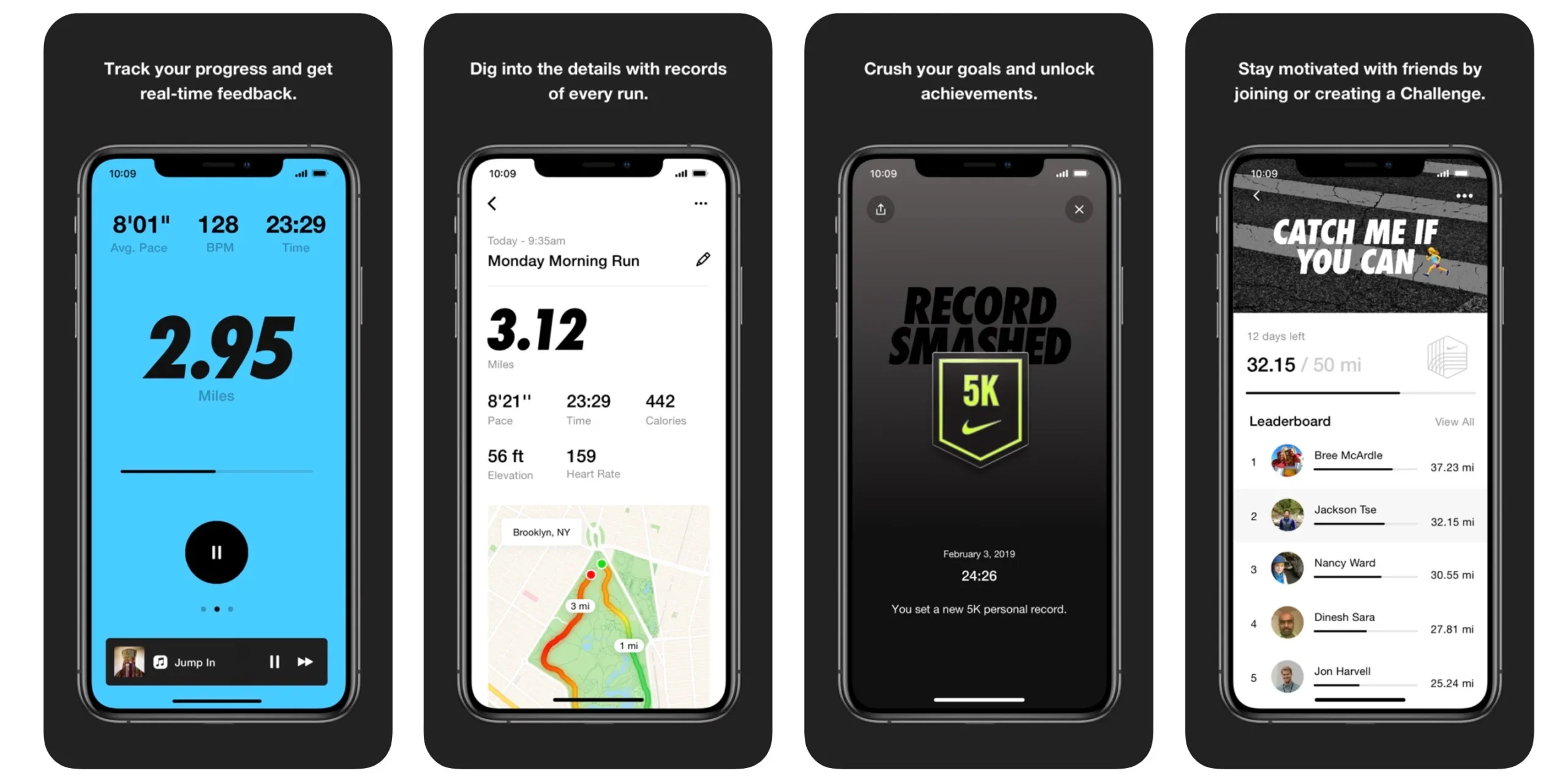
Tools as Creative Partners
New creative platforms have transformed how designers explore ideas. They no longer start from scratch. They start from sensation.
A designer can generate multiple layout directions, tone variations, or color harmonies in minutes. The real craft lies in guiding the process toward emotional truth.
It is not about automation. It is about curation. The goal is not speed, but alignment between feeling and purpose. The best creative work happens when technology serves intuition rather than replacing it.
Strategic Imperfection: Why Humanity Still Wins
In an era of endless digital polish, people crave authenticity. They respond to small imperfections that signal something real behind the screen.
This is why vibe design often embraces asymmetry, humor, and warmth. A slightly offbeat motion, a conversational tone, or a natural pause in an animation can create a feeling of presence that no automated process can mimic.
The goal is not perfection but emotional fidelity. Brands that design for warmth and connection rather than pure precision create lasting relationships with their audiences.
The Next Frontier: Vibe Systems and Emotional Intelligence at Scale
Imagine design frameworks that manage emotion the way current ones manage color and typography.
Future brand systems will measure tone, tempo, and audience sentiment just as precisely as they track conversions or clicks. Creative dashboards may one day recommend changes such as:
- Make this animation calmer.
- Increase visual warmth for younger audiences.
- Shift messaging from aspirational to reassuring.
This is the evolution from static design to living empathy, where creative teams tune their brands the way musicians tune instruments.
The Designer as a Conductor, Not a Technician
The modern designer’s role has changed. They are no longer enforcing visual grids but conducting emotional resonance.
The best creative professionals now think like filmmakers or music producers, mixing sensory cues, pacing experiences, and translating emotion into rhythm and tone. The future of design leadership is not about what looks good. It is about what feels right.
Feel Is the New Function
Vibe working is not a passing trend. It is a mindset that values emotion as much as execution.
For brands, it means coherence over consistency.
For users, it means experiences that feel personal and alive.
For designers, it means a renewed focus on intuition, rhythm, and flow.
The next generation of great design will not just look different. It will feel different.
In a world full of noise, feeling will always be the signal.
Contact Bluetext to learn more.
Generative AI is transforming content marketing. From blog posts to email campaigns, AI tools can help marketers create copy faster and more efficiently. But there’s a catch: the quality of your AI output depends almost entirely on the prompts you provide. A vague or poorly structured prompt can lead to inconsistent, off-brand content that wastes time instead of saving it.
This guide will teach you the fundamentals of prompt engineering, helping you craft effective prompts that consistently produce on-brand content, whether you’re writing social media posts, website copy, or email campaigns.
What is Prompt Engineering?
Prompt engineering is the practice of designing inputs—or prompts—for AI tools to generate precise, useful outputs. For marketers, it’s less about coding and more about clear communication: giving AI enough context and direction to produce content that aligns with your brand voice, tone, and objectives.
For example:
- Vague prompt: “Write a blog about email marketing.”
- Well-engineered prompt: “Write a 600-word blog post on email marketing for B2B SaaS companies, focusing on personalization strategies. Use a professional, approachable tone and include at least three actionable tips.”
The difference is night and day. The second prompt gives context, audience details, desired length, tone, and structure, which helps the AI generate content you can use with minimal editing.
Why marketers need prompt engineering:
- Ensures content aligns with brand voice
- Reduces time spent editing AI outputs
- Increases content consistency across channels
- Improves ROI on AI content tools

Key Principles of Effective Prompt Engineering
To get the most out of AI tools, marketers should follow these core principles:
- Clarity – Be explicit about what you want, including tone, style, audience, and format.
- Context – Provide background information or examples to guide the AI.
- Constraints – Define limits such as word count, structure, or style to keep outputs consistent.
- Iterative Refinement – Test, tweak, and improve prompts based on results.
By following these principles, you can significantly reduce wasted effort and ensure AI-generated content is aligned with your marketing goals.
Prompt Engineering Strategies for Content Marketers
Here are actionable strategies you can start using today:
1. Start With a Goal
Define the objective of your content before writing your prompt. Are you creating a blog post, a LinkedIn update, an email, or a product description? Your prompt should clearly state the intended output.
2. Audience-Centric Prompts
Include audience persona details, pain points, and preferences. For example:
“Write a LinkedIn post targeting marketing managers at mid-sized SaaS companies, highlighting the benefits of AI-powered analytics in campaign optimization.”
3. Specify Tone and Style
Your brand voice matters. Whether your tone is professional, friendly, witty, or authoritative, make it clear in your prompt to avoid generic outputs.
4. Provide Examples
Give the AI examples of successful content. For instance, link to or describe previous posts or blogs that represent the style you want.
5. Use Templates
Create reusable prompt templates for recurring content types. Examples:
- Blog posts: Include word count, section headers, key points, CTA.
- Social media: Specify character limit, hashtags, emojis, tone.
- Emails: Define subject line, body length, personalization cues.
Sample Prompt Template:
“Write a 500-word blog post for [audience] on [topic]. Include three actionable tips and a call-to-action. Use a [tone] tone and [style] formatting.”
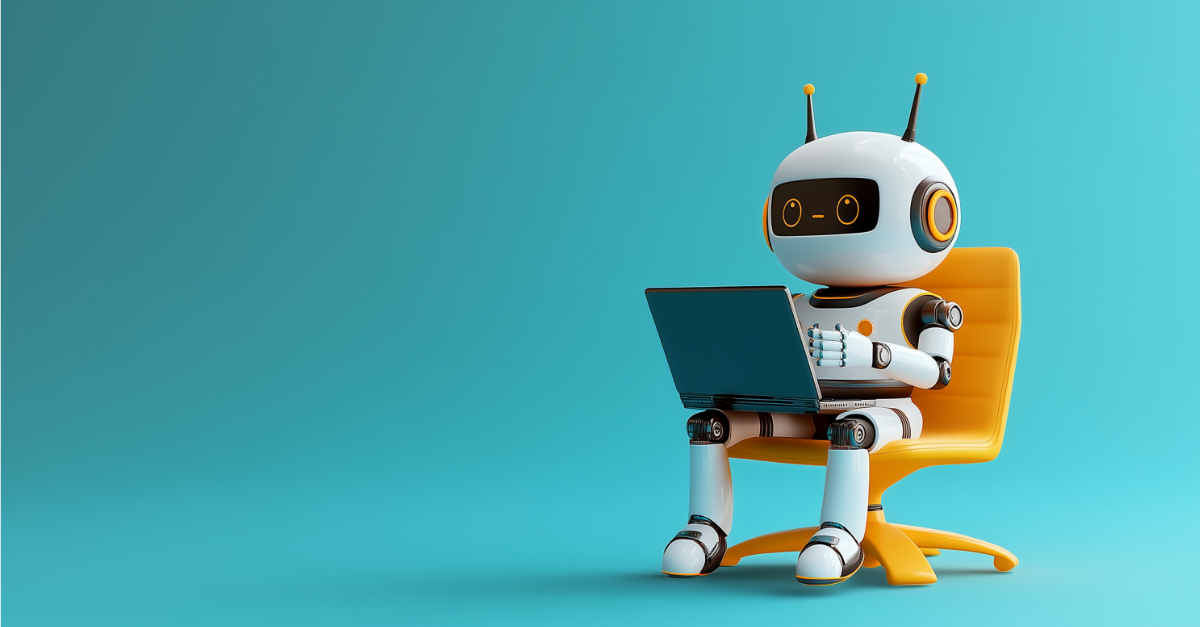
Common Prompt Mistakes to Avoid
Even experienced marketers can make mistakes with AI prompts. Avoid these pitfalls:
- Using vague language or assuming the AI will infer context
- Overloading prompts with too many instructions
- Ignoring iterative testing and refinement
- Failing to align output with brand voice
By addressing these common errors, you’ll save time and improve the consistency of your AI-generated content.
Measuring Prompt Success
Effective prompt engineering doesn’t stop at writing. You need to measure success:
- Content alignment: Does the output match your brand voice and style?
- Engagement metrics: How well does the content perform with your audience?
- Efficiency gains: Are you spending less time editing AI outputs?
Iterate on your prompts using these metrics. Small adjustments can dramatically improve output quality over time.
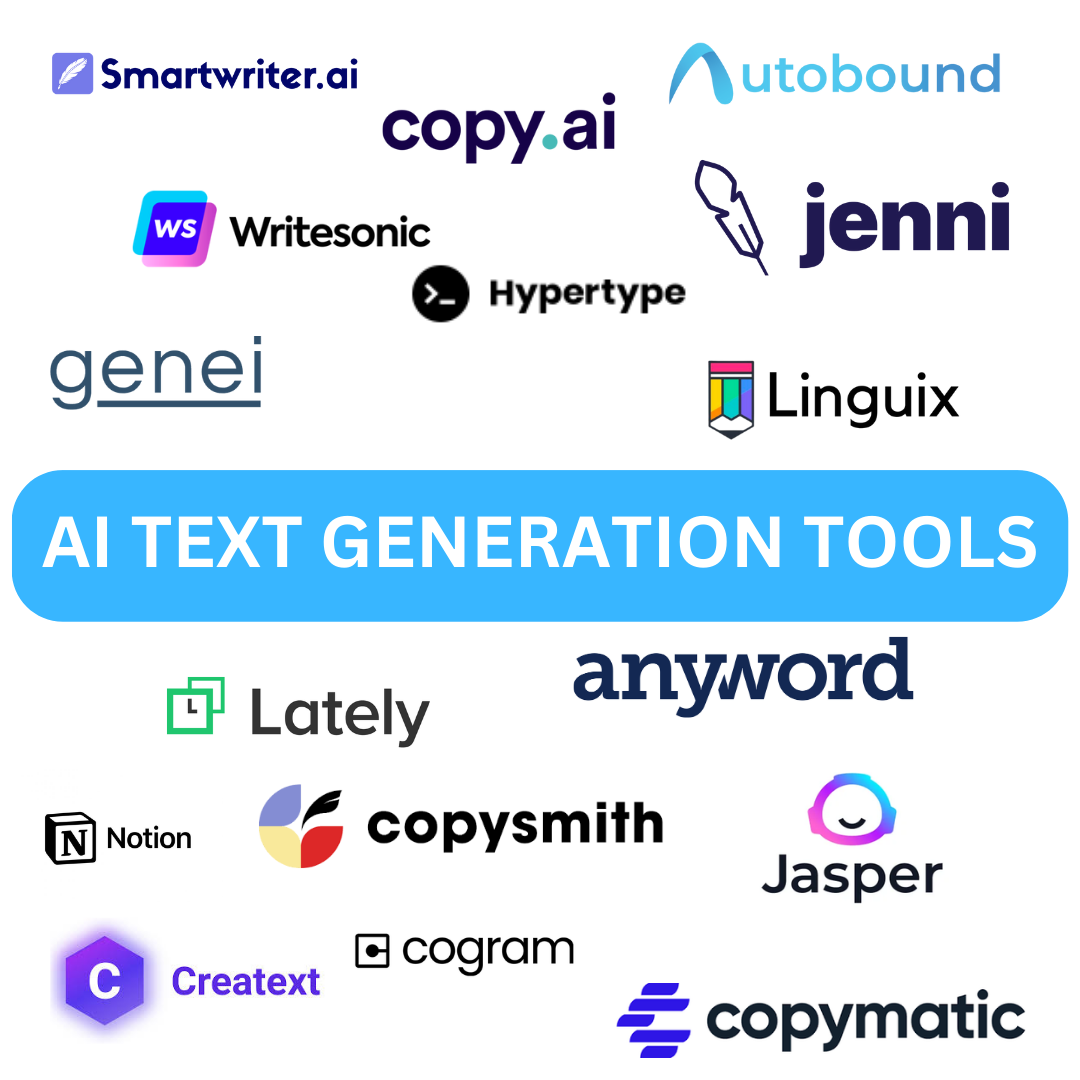
Tools and Resources
Several AI writing tools are well-suited for marketers:
- ChatGPT – Versatile tool for blogs, emails, social posts
- Jasper – AI content generation with templates and workflows
- Writesonic – Great for social media, ads, and web content
- Copy.ai – Fast generation for marketing copy and product descriptions
Learning Resources:
- Blogs and guides on AI content creation
- Online courses focused on AI writing tools
- Community forums and workshops on prompt engineering
Conclusion & Takeaways
Prompt engineering is a skill every modern marketer should master. By crafting clear, context-rich, and iterative prompts, you can consistently generate on-brand content, reduce editing time, and maximize the ROI of AI tools.
Actionable steps:
- Start small and iterate on your prompts
- Document successful prompts for repeat use
- Always measure outputs against your brand standards
Ready to supercharge your content marketing with AI? Contact Bluetext to learn how our team can help you implement AI-driven content strategies, including expert prompt engineering support.
In today’s privacy-first world, brands can no longer rely on third-party cookies or opaque tracking methods to understand their audiences. Instead, forward-thinking marketers are turning to zero-party data—the information customers voluntarily share with brands. This type of data not only powers highly personalized experiences but also builds trust, loyalty, and long-term customer relationships.
Understanding Zero-Party Data
Definition and Key Characteristics
Zero-party data is any data that a customer intentionally and proactively shares with a brand. Unlike first-party data (behavioral information collected automatically) or third-party data (purchased from external sources), zero-party data is explicit, consented, and accurate because the user provides it directly.
Examples of Zero-Party Data
Brands can collect zero-party data through a variety of channels, including:
- Preference centers where users specify communication or product preferences
- Interactive quizzes or surveys
- Personalized onboarding experiences
- Subscription and loyalty program forms
- Feedback polls or content recommendations
This data is incredibly valuable because it reflects the customer’s interests, needs, and intent in their own words.

Why Zero-Party Data Matters Now
The End of Third-Party Cookies
With privacy regulations like GDPR and CCPA, and major browsers phasing out third-party cookies, marketers need alternative ways to understand and engage their audiences. Zero-party data fills this gap by providing first-hand insights without relying on intrusive tracking.
Building Trust Through Transparency
When customers willingly share information, they expect brands to respect it. Transparent data collection fosters trust and encourages ongoing engagement. Brands that honor these expectations can strengthen relationships while minimizing privacy risks.
Enabling True Personalization
Zero-party data enables precise personalization because it comes directly from the customer. Marketers can use this information to:
- Recommend products or services that truly align with preferences
- Tailor email content and messaging
- Create loyalty programs that reward meaningful behaviors
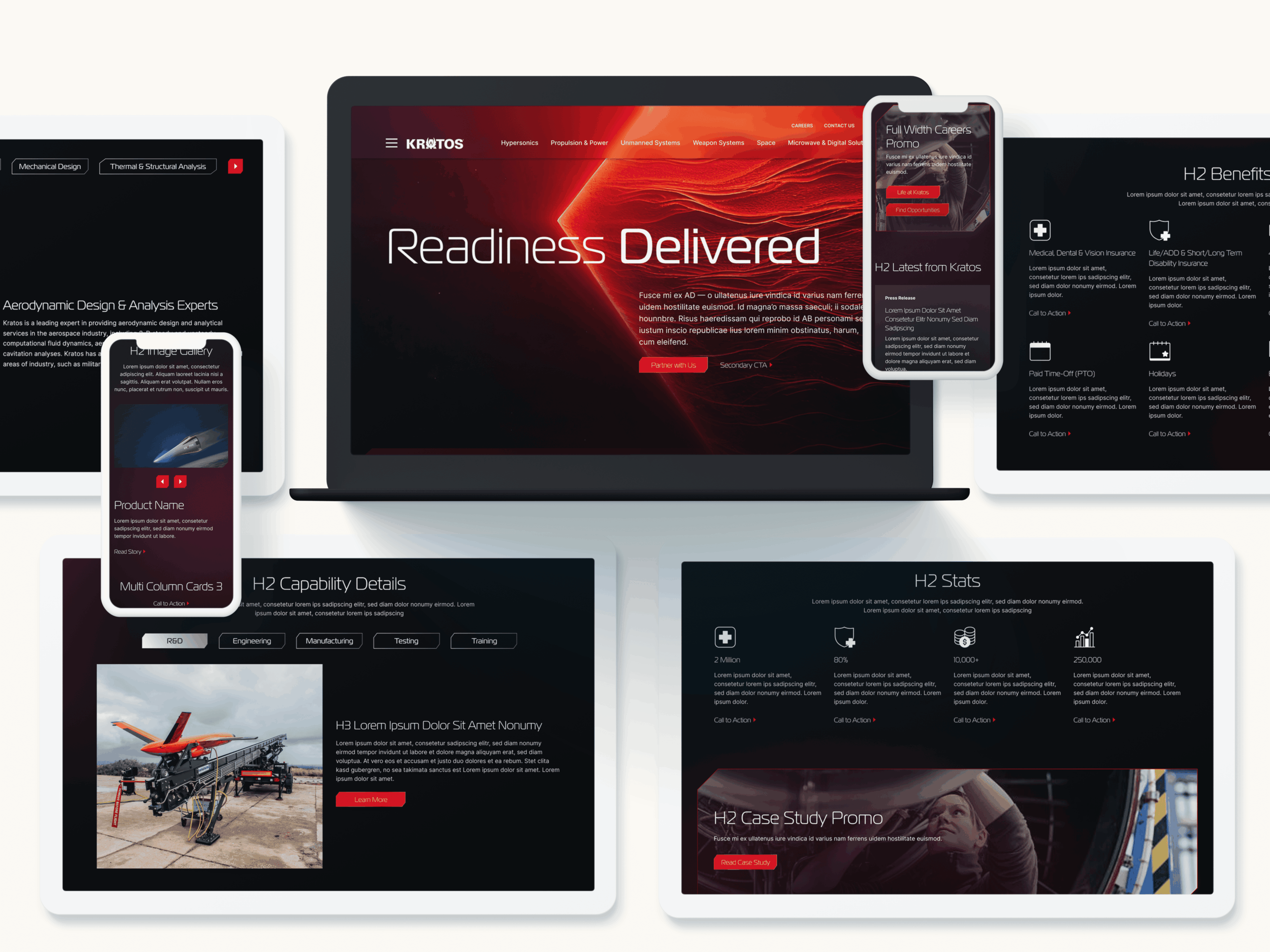
How to Capture Zero-Party Data Effectively
Offer Value in Exchange for Data
Customers are willing to share information if there’s something in it for them. Effective strategies include:
- Gated content like whitepapers or industry reports
- Personalized product or service recommendations
- Exclusive offers, events, or early access
Design Engaging Collection Methods
Interactive and enjoyable experiences increase participation:
- Quizzes that help users discover their “best fit” products
- Onboarding surveys that guide personalized experiences
- Polls and preference selections embedded in apps or websites
Prioritize Consent and Transparency
Always make it clear what data is collected and how it will be used. Provide easy options to manage preferences and honor opt-outs. Customers are more likely to share data when they feel in control.
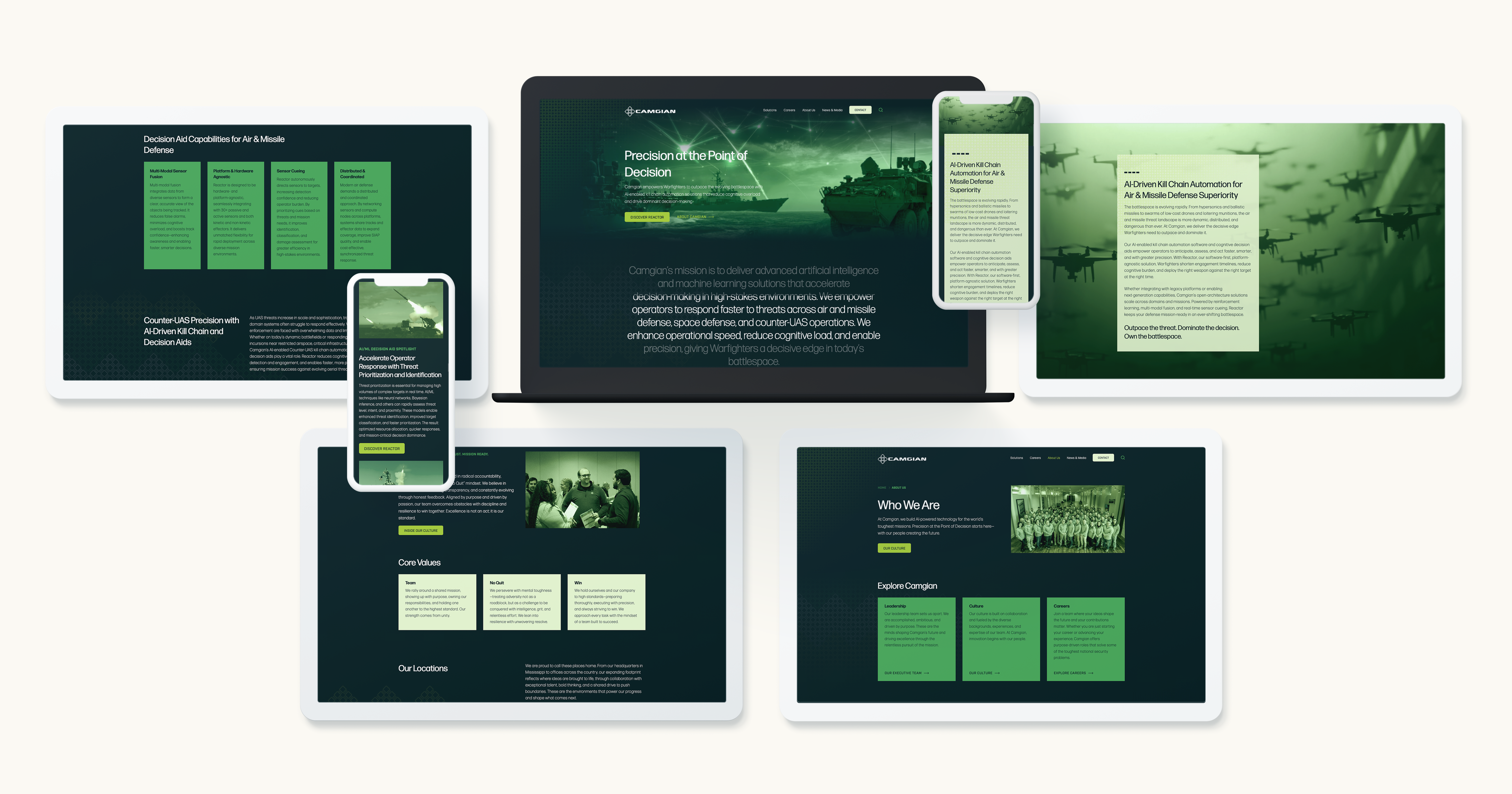
Implementing a Zero-Party Data Strategy
Integrate with Your MarTech Stack
Connect zero-party data to your CRM, CDP, and personalization tools to ensure insights translate into actionable campaigns.
Align Across Teams
Effective zero-party data strategies require collaboration between marketing, legal, and IT teams to ensure compliance and execution.
Measure and Optimize
Track metrics like engagement, conversion rates, and content interaction to refine your approach and maximize the value of collected data.
The Future of Data-Driven Marketing
Zero-party data is more than a workaround for the decline of cookies—it’s a strategic asset that future-proofs personalization. Brands that invest in transparent, value-driven data collection will:
- Build deeper customer trust
- Deliver highly relevant experiences
- Stay ahead of privacy regulations

Partnering for Smart Data Strategy
Capturing and leveraging zero-party data effectively takes strategy, technology, and expertise. Bluetext helps brands design data-driven marketing frameworks that respect customer privacy while maximizing engagement and personalization.
Ready to build a future-proof data strategy?
Partner with Bluetext to design transparent, high-performing campaigns powered by zero-party data. Contact us today.
When it comes to building a brand, nothing is more foundational than the name. In the B2B world, where enterprise products and sub-brands compete in complex, high-stakes markets, a name is more than a label — it’s a signal of trust, credibility, and identity.
The right name can make a product memorable, set it apart from competitors, and align it with the broader company vision. The wrong name can confuse audiences, fail to resonate, or even lead to costly legal disputes. That’s why great B2B brands always start with great words.
The Power of Strategic Naming in B2B
Names in B2B carry weight far beyond recognition. They are often the first touchpoint between a buyer and a brand, setting the tone for future interactions.
- Memorability matters — A strong name cuts through technical jargon and helps busy decision-makers remember you.
- Brand equity grows with consistency — A well-chosen name reinforces trust every time it’s mentioned.
- B2B ≠ B2C — While consumer names can lean playful or trendy, B2B naming must balance creativity with authority and professionalism.
In a crowded marketplace, strategic naming is not just creative wordplay — it’s a competitive advantage.
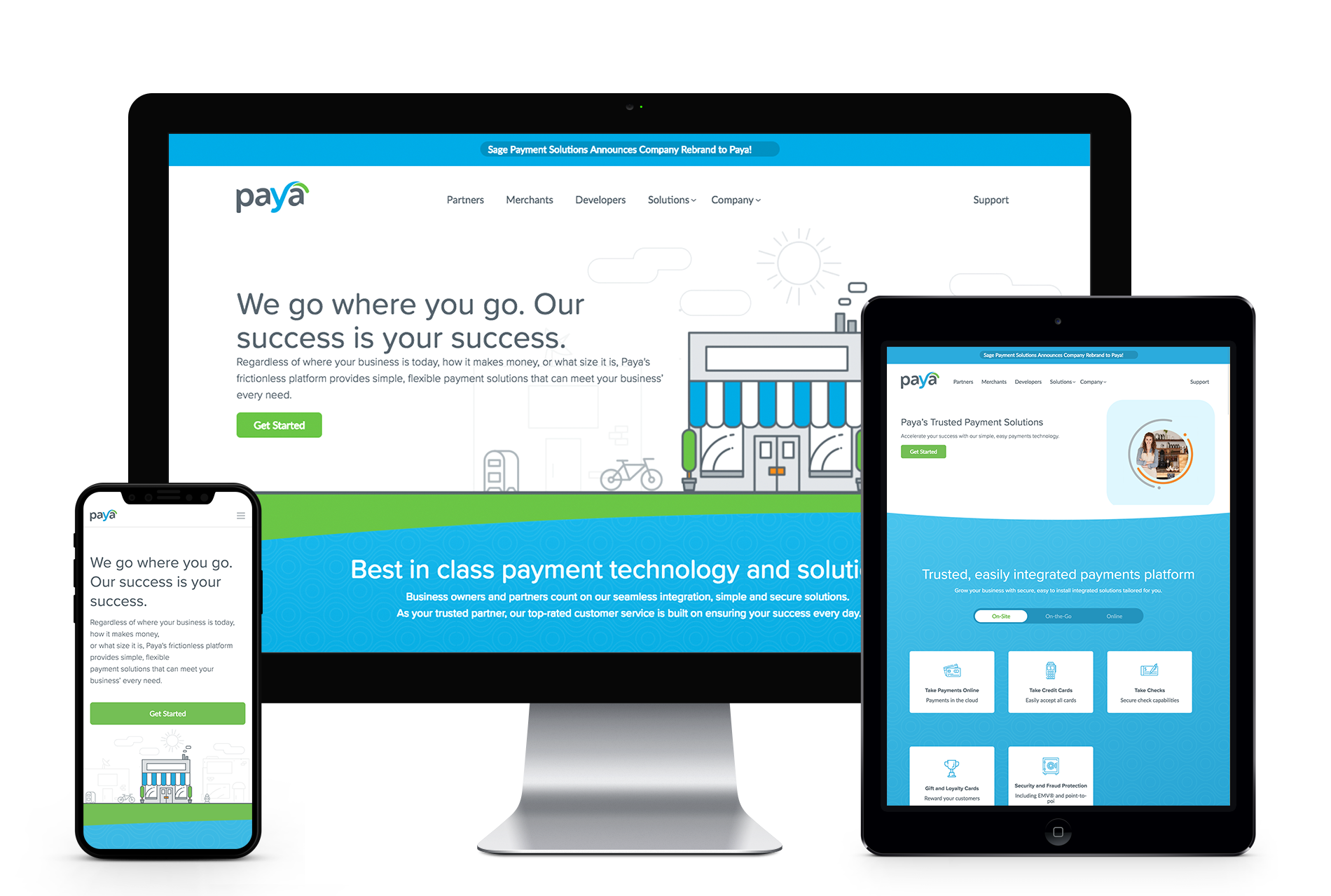
Naming Methodologies That Work
Behind every great name is a thoughtful process. Strong naming methodologies blend creativity with research to deliver names that resonate and endure.
Exploratory Research and Brand Workshops
Successful naming starts with understanding the organization’s mission, values, and audience. Workshops with stakeholders help define tone, positioning, and differentiators.
Linguistic and Cultural Considerations
A name must work across markets, languages, and cultures. What sounds sharp in one region could have unintended meanings in another.
Creative Frameworks
- Descriptive names highlight what the product does (e.g., Salesforce).
- Evocative names suggest an idea or feeling (e.g., Oracle).
- Invented names create something entirely new (e.g., Accenture).
Each framework has strengths — the key is aligning the choice with your brand’s strategy and audience expectations.
Testing and Validation
Names should be tested with target audiences to gauge memorability, clarity, and emotional resonance. Feedback ensures the final choice doesn’t just work in theory but in practice.
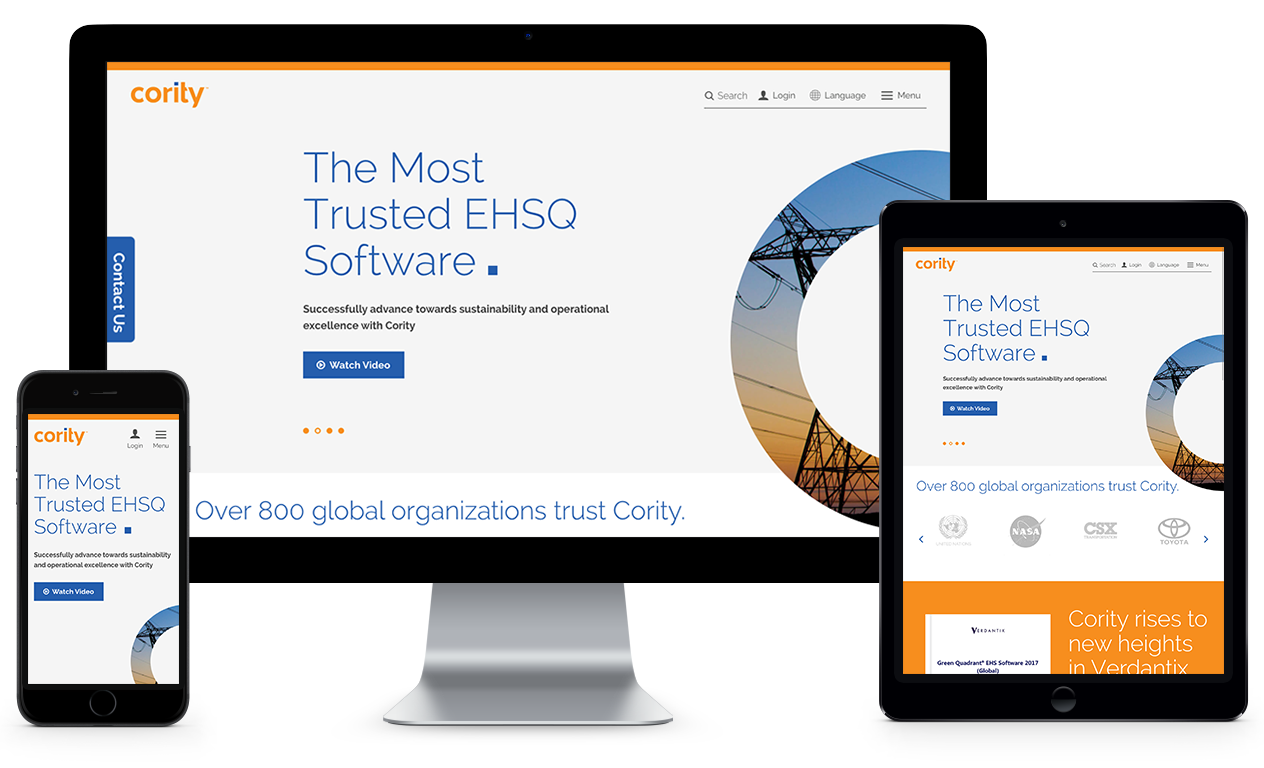
Avoiding Trademark and Legal Pitfalls
Even the most creative name can hit a roadblock if it fails legal clearance. Trademark checks are essential early in the process to avoid wasted investment.
- Trademark searches confirm whether a name is already registered.
- Domain availability can impact digital strategy.
- International checks help avoid embarrassing missteps.
Real-world cautionary tales abound — from brand names that didn’t translate well overseas to product names too close to competitors. Strategic foresight prevents expensive rebrands later.
Aligning Names with Brand Tone and Architecture
Naming doesn’t happen in a vacuum. Every name should reinforce the master brand while adding distinctiveness at the product or sub-brand level.
- Tone alignment: Is your company bold and innovative, or conservative and trustworthy? A name should reflect the culture you want to project.
- Brand architecture: Names must fit within the existing portfolio, avoiding overlap or confusion.
- Perception building: The right word choice can position a product as secure, cutting-edge, or transformative — shaping how stakeholders see it from the start.

Best Practices for Launching a New Name
Even the strongest name needs support to succeed. Launch strategy is as important as the name itself.
- Internal rollout first: Employees should hear the story behind the name before it goes public.
- Storytelling matters: Explain not just the “what” but the “why” of the name to foster buy-in.
- Integrated campaigns: Reinforce the name through visuals, content, and repeated exposure across all channels.
By treating naming as part of a broader brand strategy, companies can ensure long-term adoption and equity.
Why Great B2B Brands Start with Great Words
In enterprise markets, names carry extraordinary power. They’re the anchors of brand identity, the signals of trust, and the shorthand for complex value propositions.
B2B companies that invest in strategic naming — balancing creativity with methodology, legal foresight, and tone alignment — position themselves for lasting success. Because at the end of the day, great brands start with great words.
Need a Name That Captures Your Vision?
Naming isn’t just about creativity — it’s about strategy, foresight, and alignment with your brand’s mission.
Need a name that captures your vision and stands the test of time? Contact Bluetext to build a strategic naming process that works.